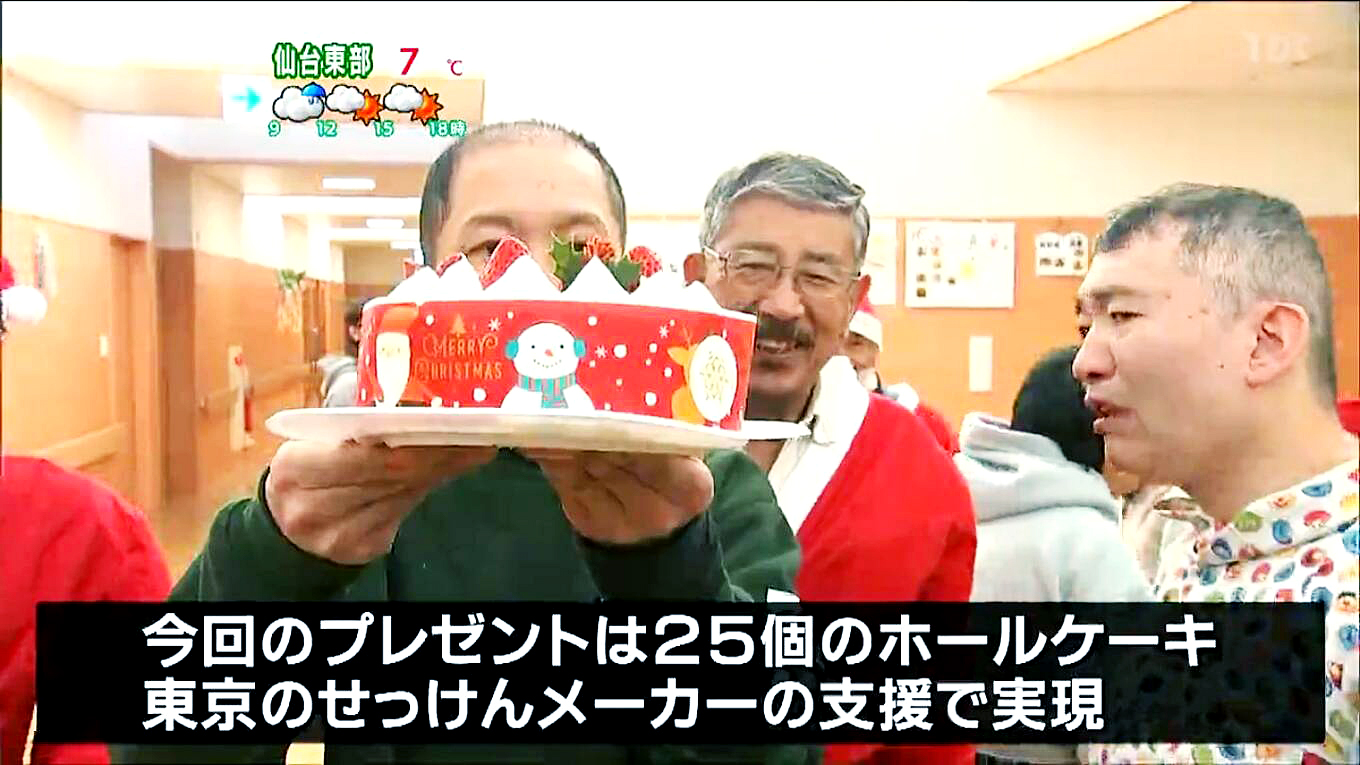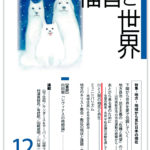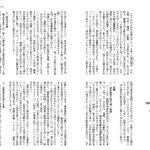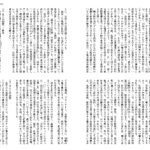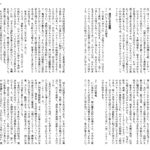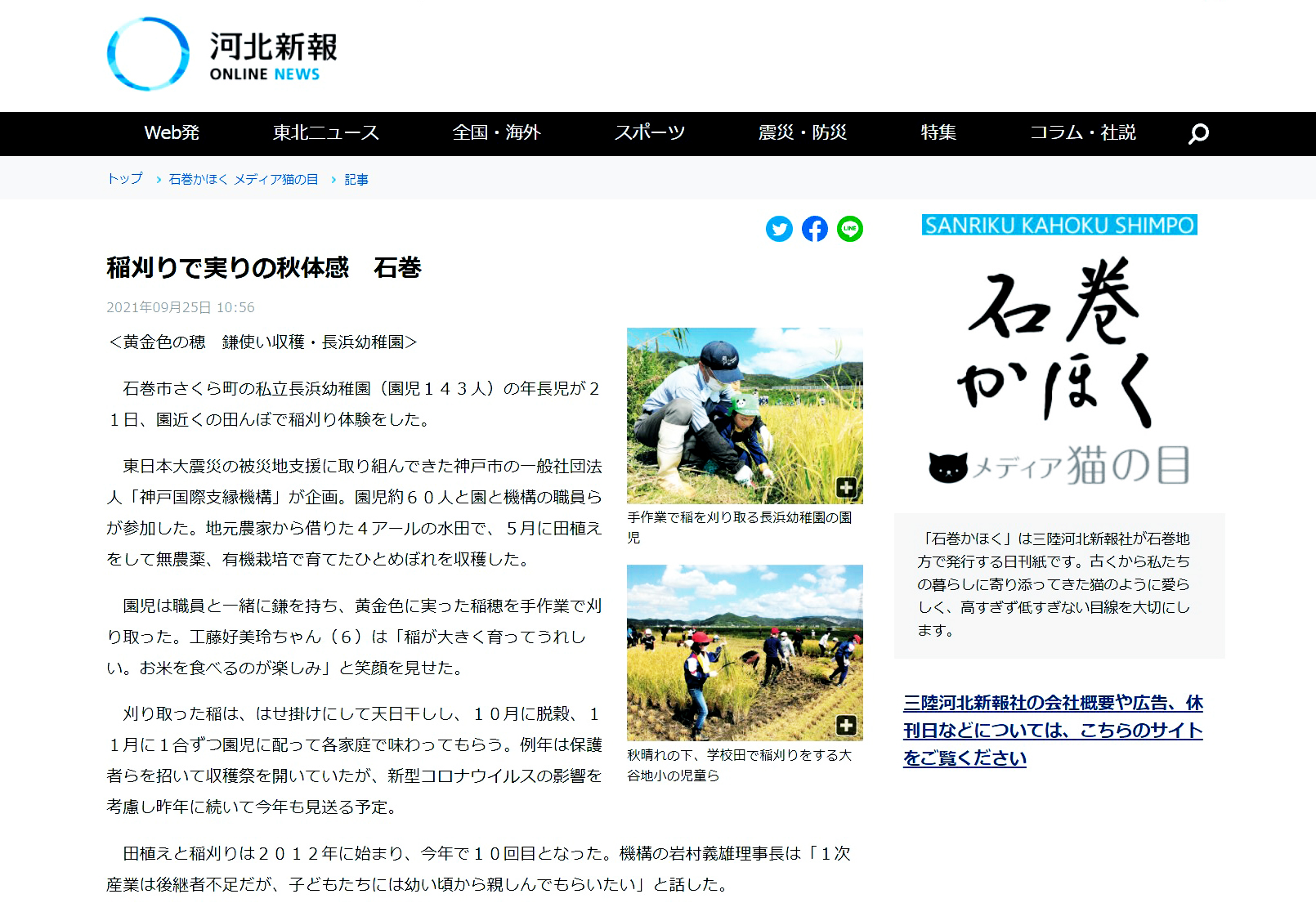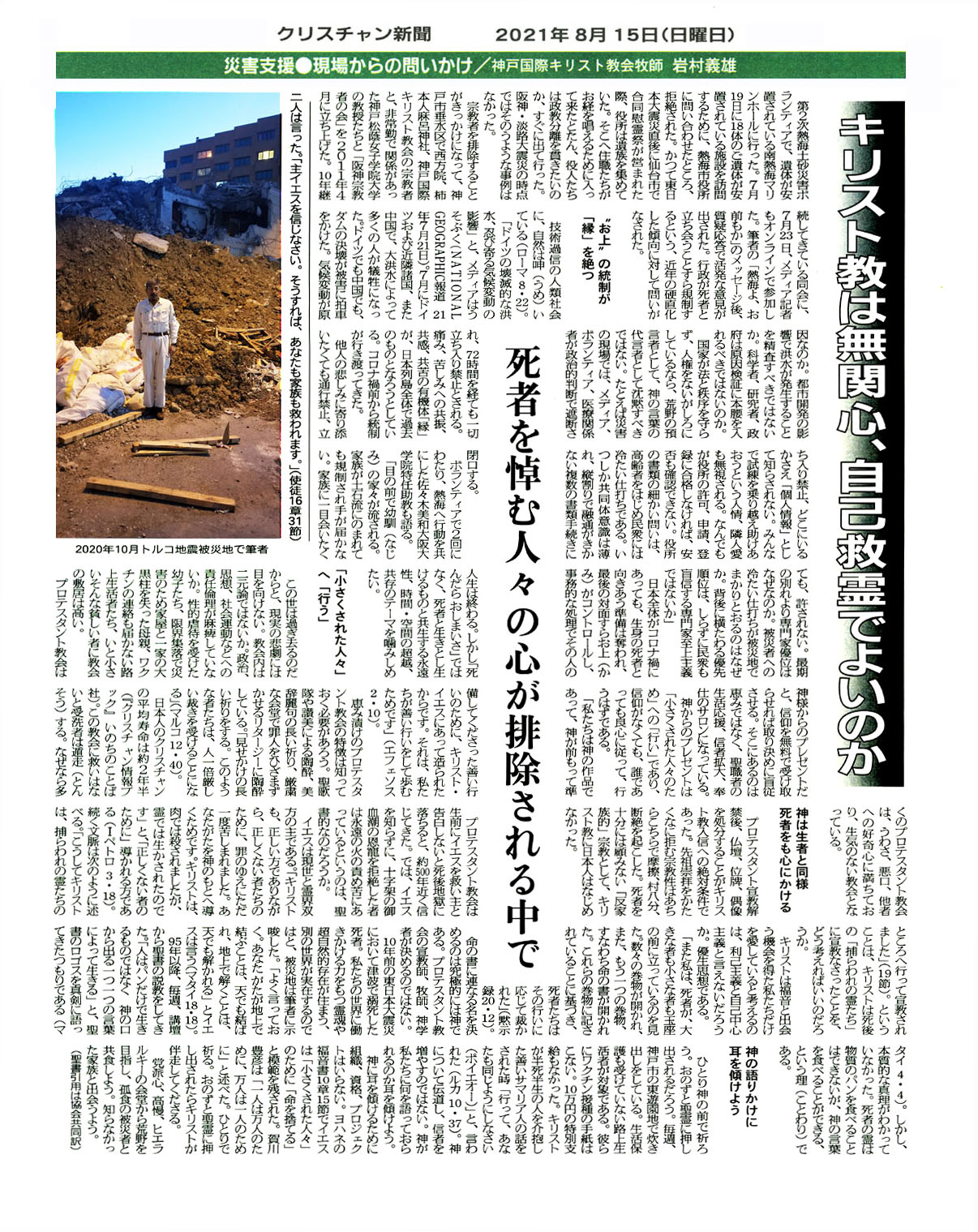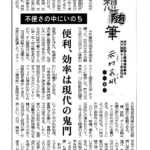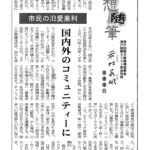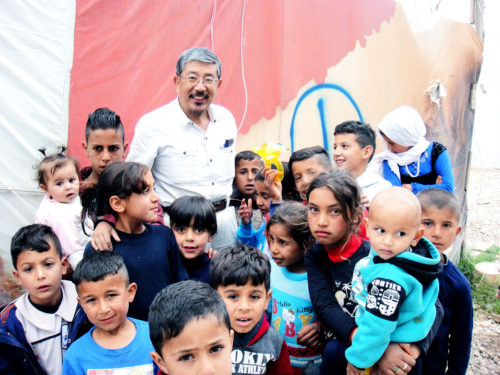「キリスト教と災害」Christianity and Disaster
□ 構成
被災でお困りの方,炊き出し,がれき撤去,ドロ出し,畳替えは下記にご連絡ください。
携帯 070-5045-7127 (岩村義雄)
080-3101-1151 (村上裕隆)
080-4267-4820 (佐々木美和)
090-3706-2315 (本田寿久)
〒655-0049 神戸市垂水区狩口台5-1-101
Tel : (078) 782-9697 Fax: (078) 784-2939
E-mail: kiso@mbe.nifty.com ホームページ: https://kisokobe.sub.jp
□ 趣 旨
9・11テロ以降,神戸で難民支援からはじまった貧しい人々,孤児,戦争や被災により夫をなくした独身女性,高齢の独居者,ハンディキャップでの方々に寄り添う一般社団法人です。
「この最も小さな者の一人にしなかったのは,すなわち,私にしなかったのである」(マタ 25:45)
□ 活動記録
能登1.1大震災,北九州水害,東北ボランティア,球磨川(熊本豪雨),千葉県2019年の房総半島台風,佐賀県武雄,北海道厚真,岡山県真備,広島県小屋浦,呉市市原,愛媛県肱川,福岡県松末,熊本県益城町,鬼怒川,丹波水害など。
海外ボランティア ⇒ 「カヨ子基金」
炊き出しは毎週行っています。「スケジュール」をご覧ください。
- 「キリスト教と災害」 (英文付) “Christianity and Disaster”
完全原稿 ⇒ キリスト教と災害 「災害と聖書の神―貧しい人・幸いである」
The complete manuscript of English ⇒ Christianity and Disaster “Disaster and the God of the Bible-The poor and the victims are blessed”
「キリスト教と災害」 (1) 「第106次」
「キリスト教と防災」
「水平の〈運動〉から、垂直の〈活動〉に」岩村牧師 災害ボランティアを語る 東京大学 2016年5月1日

『石巻日日新聞』(2024年5月23日付)
「復幸米」田植え,園児ら笑顔
能登半島地震ボランティア 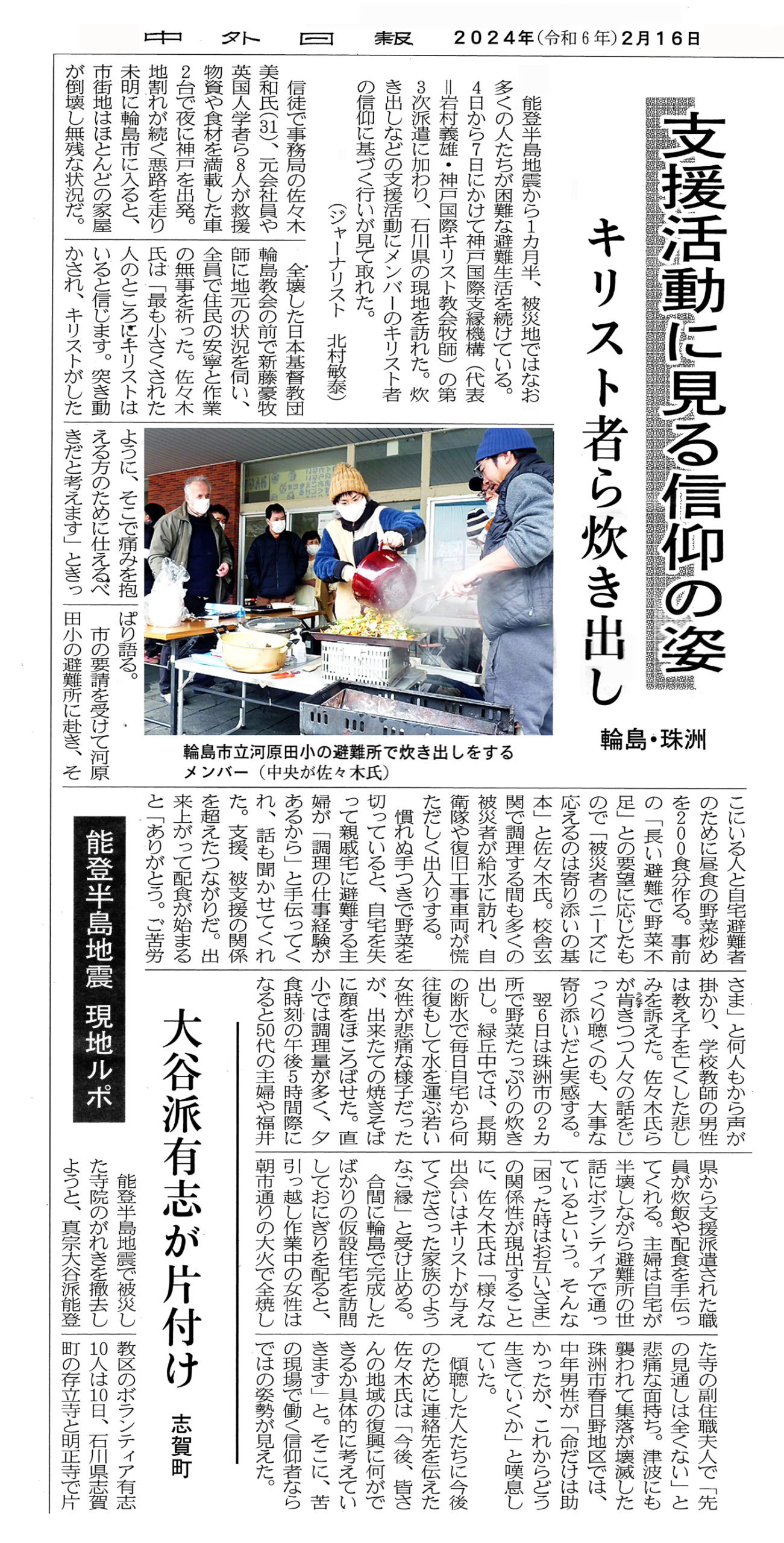
『中外日報』(2024年2月16日付)。
(5) 「消滅集落との共生」(第5次1.1大震災報告 「みんなで考える9条・明舞の会」 2024年4月)。
(4) 「原発は子々孫々に禍根を残す」(第4次1.1大震災報告 エラスムス平和研究所 2024年3月)
(3)「奥能登の風光と闇―第3次1.1大震災報告―」(「支縁のまちネットワーク」共同代表 2024年2月)
(2) 「災害対応は上からではなく,『民』の自発性しかない」(第2次 1.1大震災報告 神戸新聞文化センター 2024年1月22日)
「主よ,あなたはわたしの神」(日韓交流信徒大会 日本基督教団甲東教会 2024年1月8日)
(1)「1.1大震災震ボランティア 報告」(神戸国際支縁機構 2024年1月)
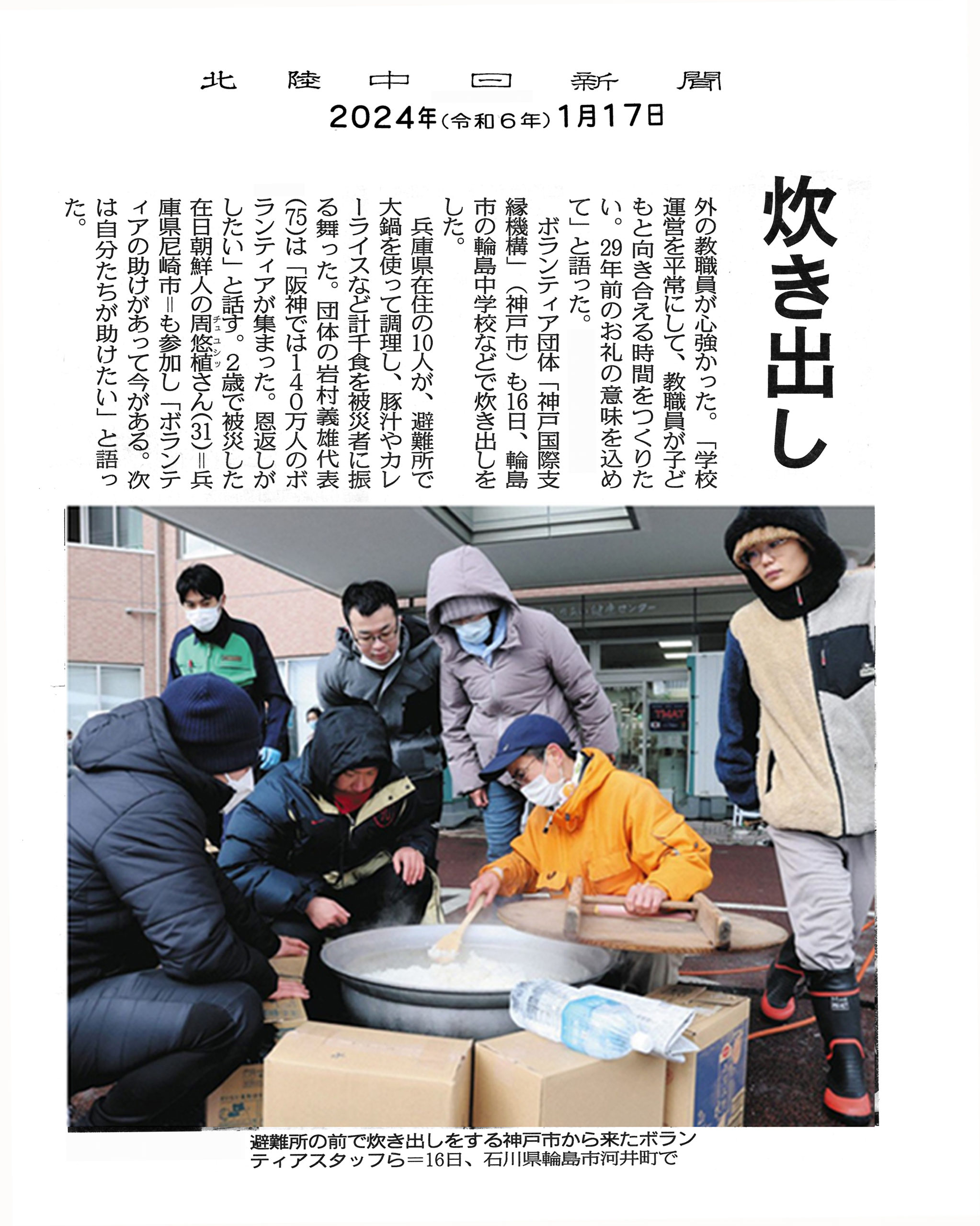
『北陸中日新聞』(2024年1月17日付)
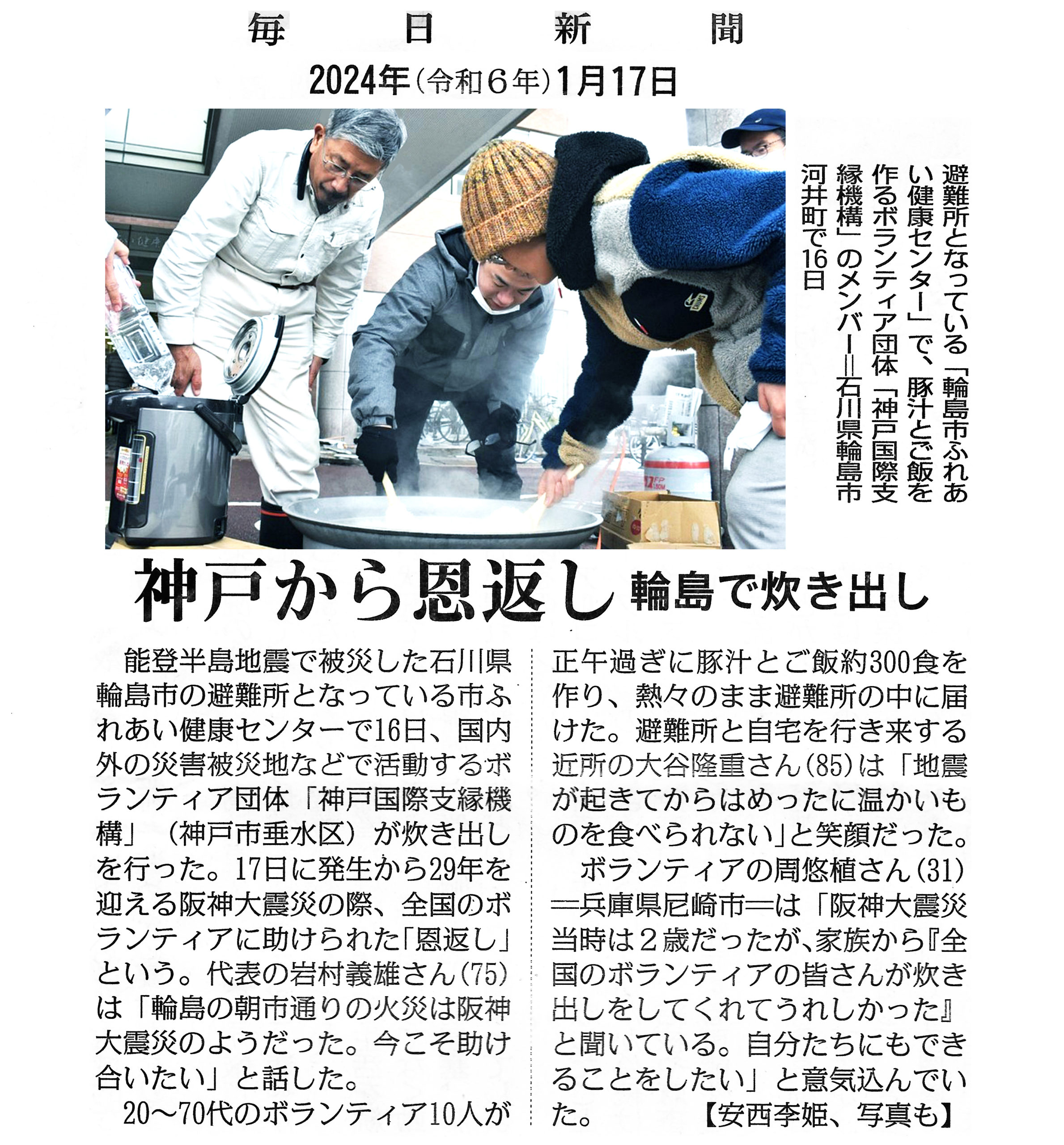
阪神・淡路大震災の恩返し 『毎日新聞』(2024年1月17日付)。
『平和のための宗教』―対話と協力 16 (WCRP日本委員会 2024年)
『平和のための宗教』―対話と協力 16 (WCRP日本委員会 2024年)
ぺったんこ,よいしょ!
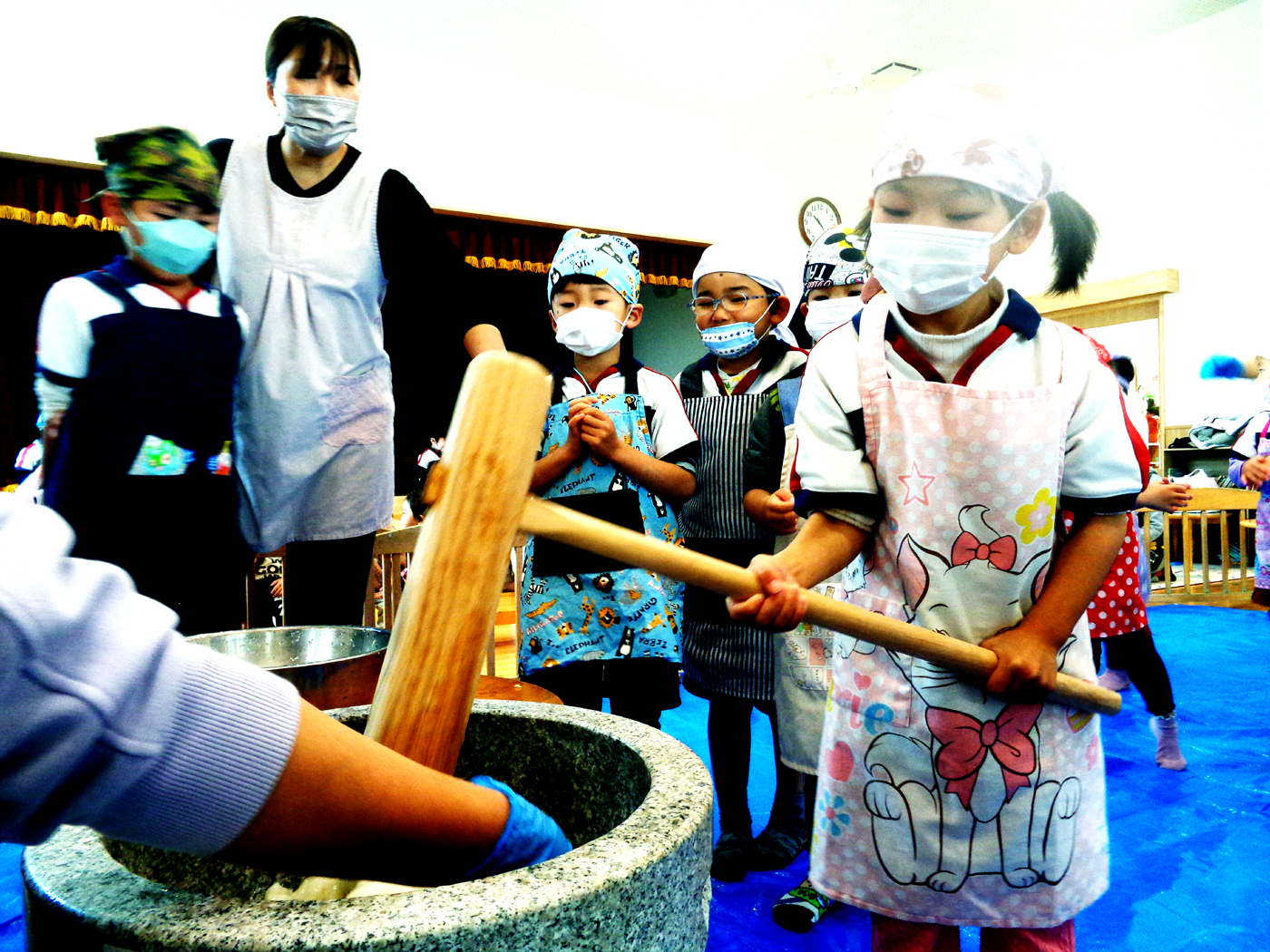
2024年1月30日,九州の相良村,なつめ保育園の園児たちと餅つき大会。トロトロ層づくり,田植え,稲刈り,天日干し,脱穀などを通じて,「復幸米」づくり。3年間,収穫に従事し園児たちも「きね」を持つ力がはいる。
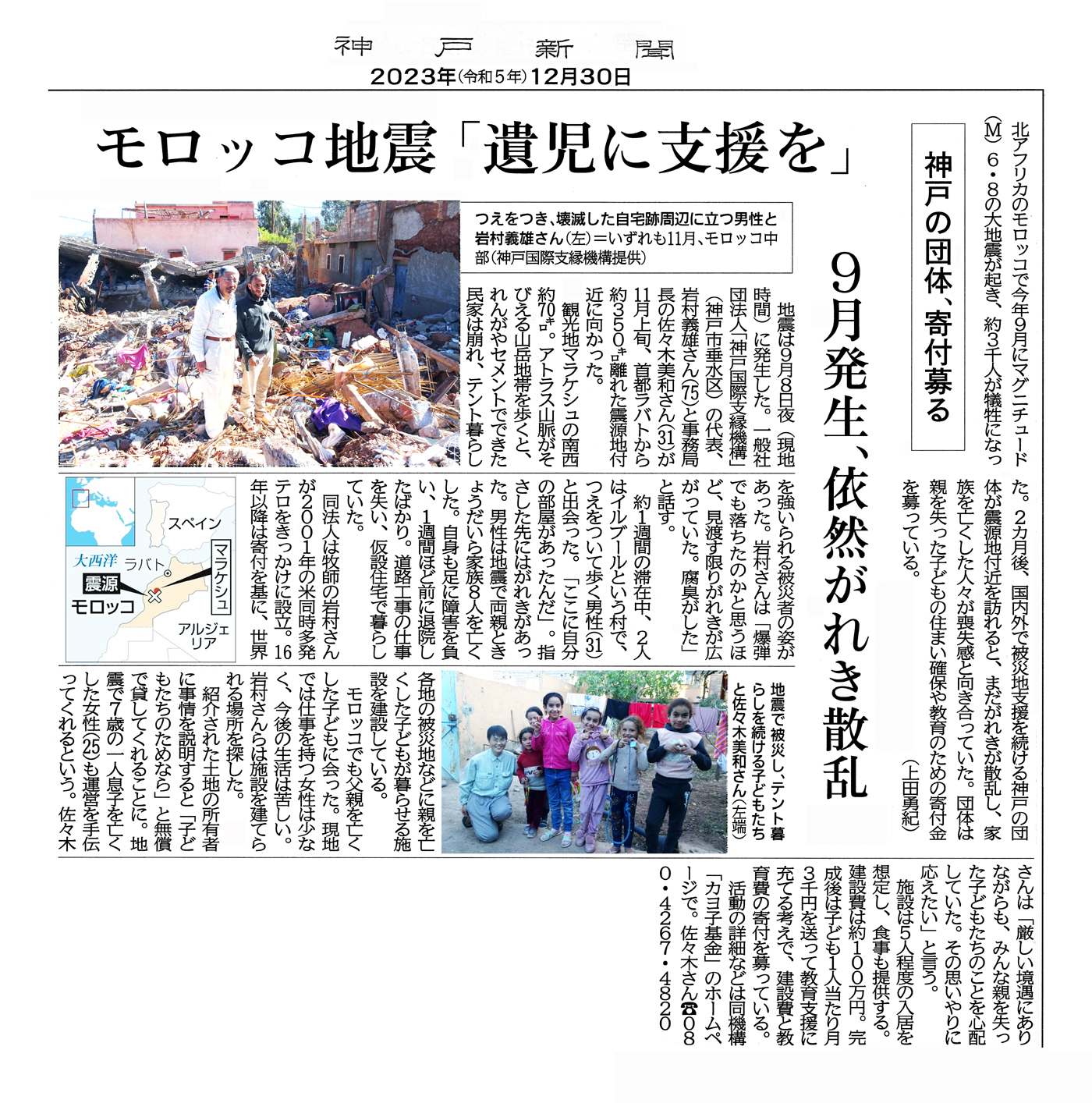
『神戸新聞』(2023年12月30日)。
モロッコ地震災害ボランティア 20231107-15
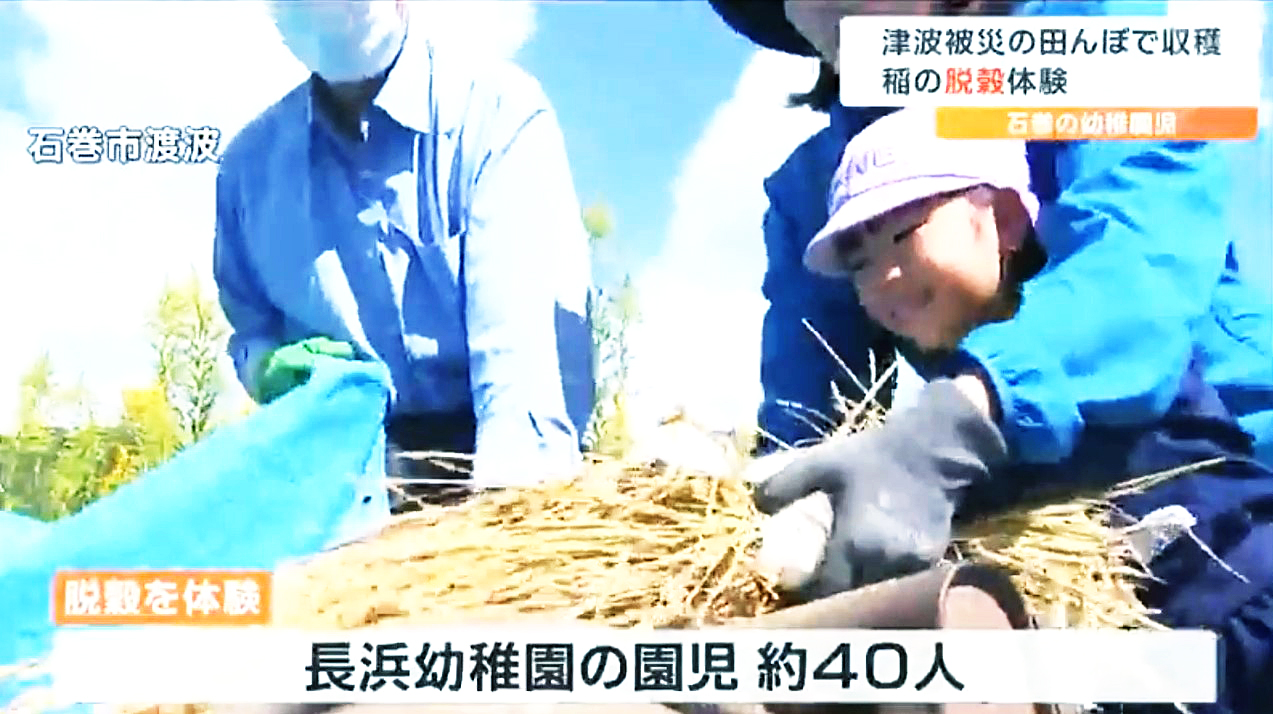
『東北テレビ』(TBC 2023年10月17日18:30-19:00 脱穀)
2023年シリア地震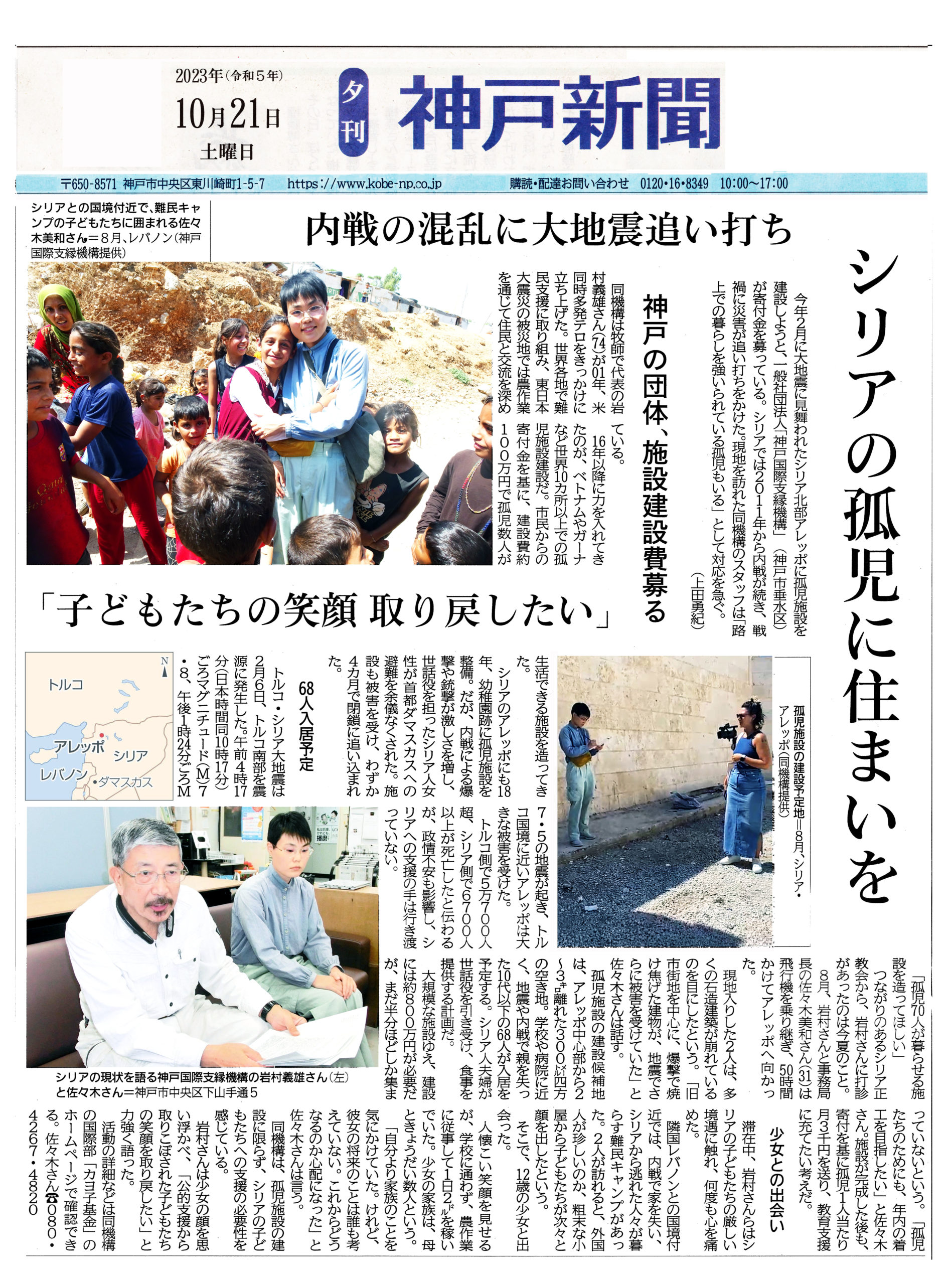
『神戸新聞』(2023年10月21日)。記者会見
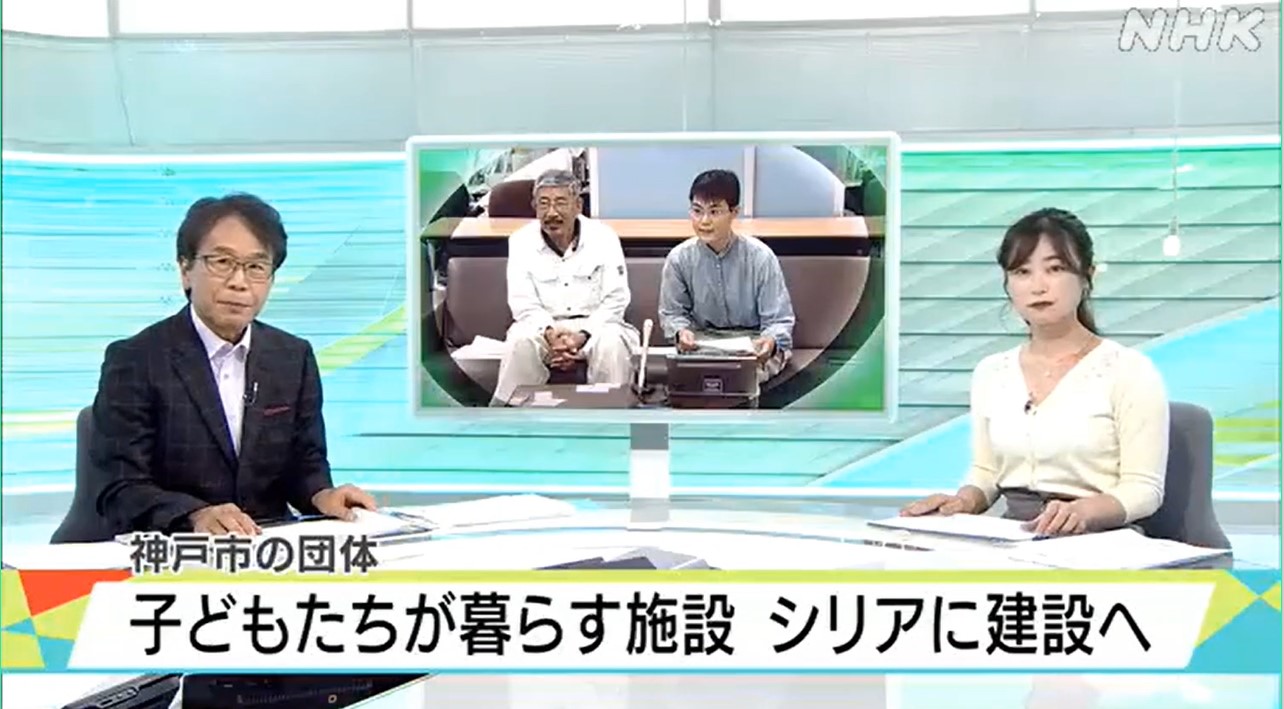
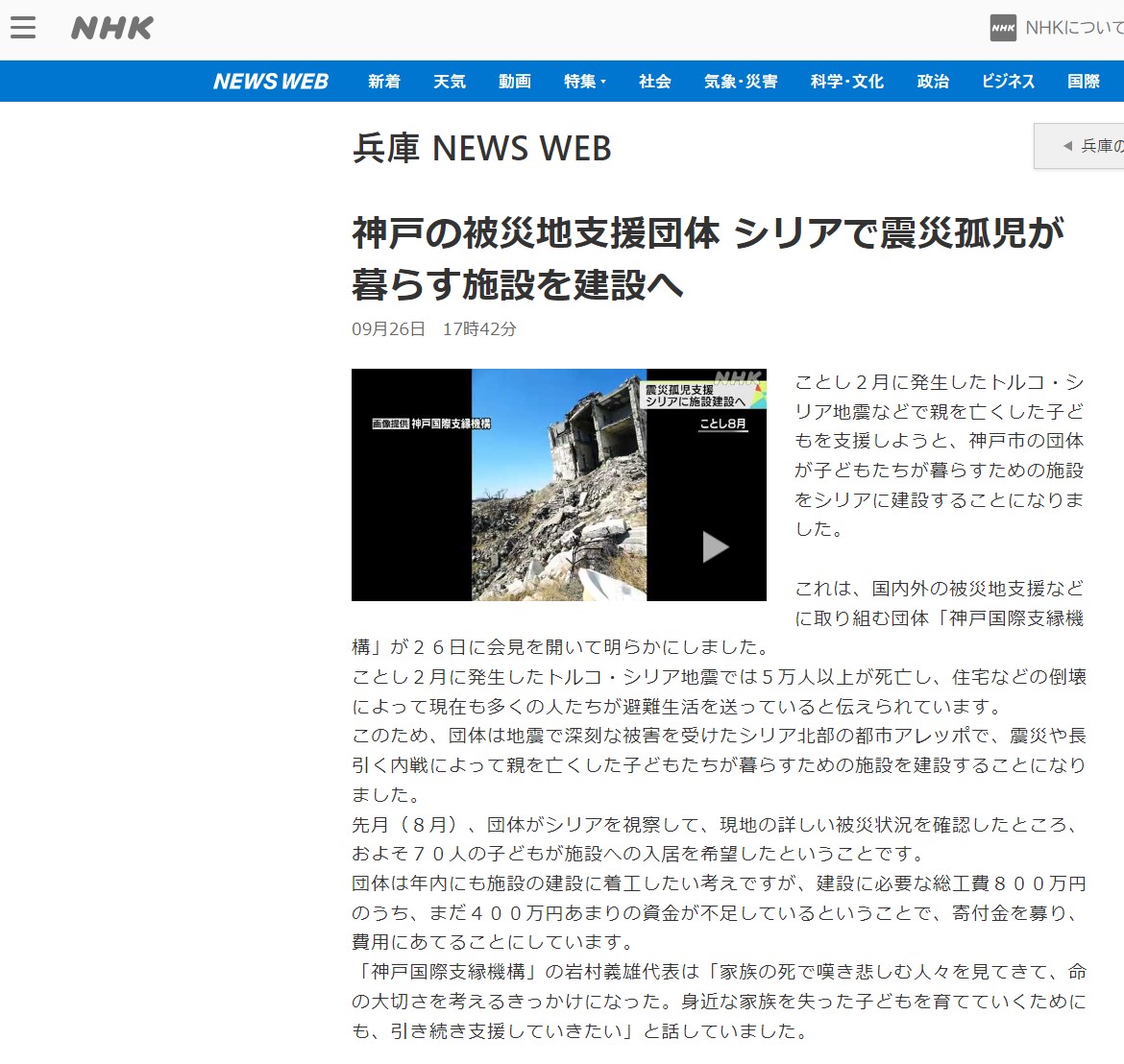
第5次シリア地震災害ボランティア 2023年8月7-18日 アレッポ訪問
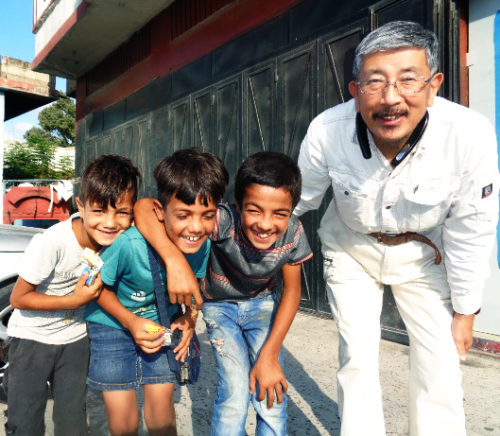
シリアの子どもたち
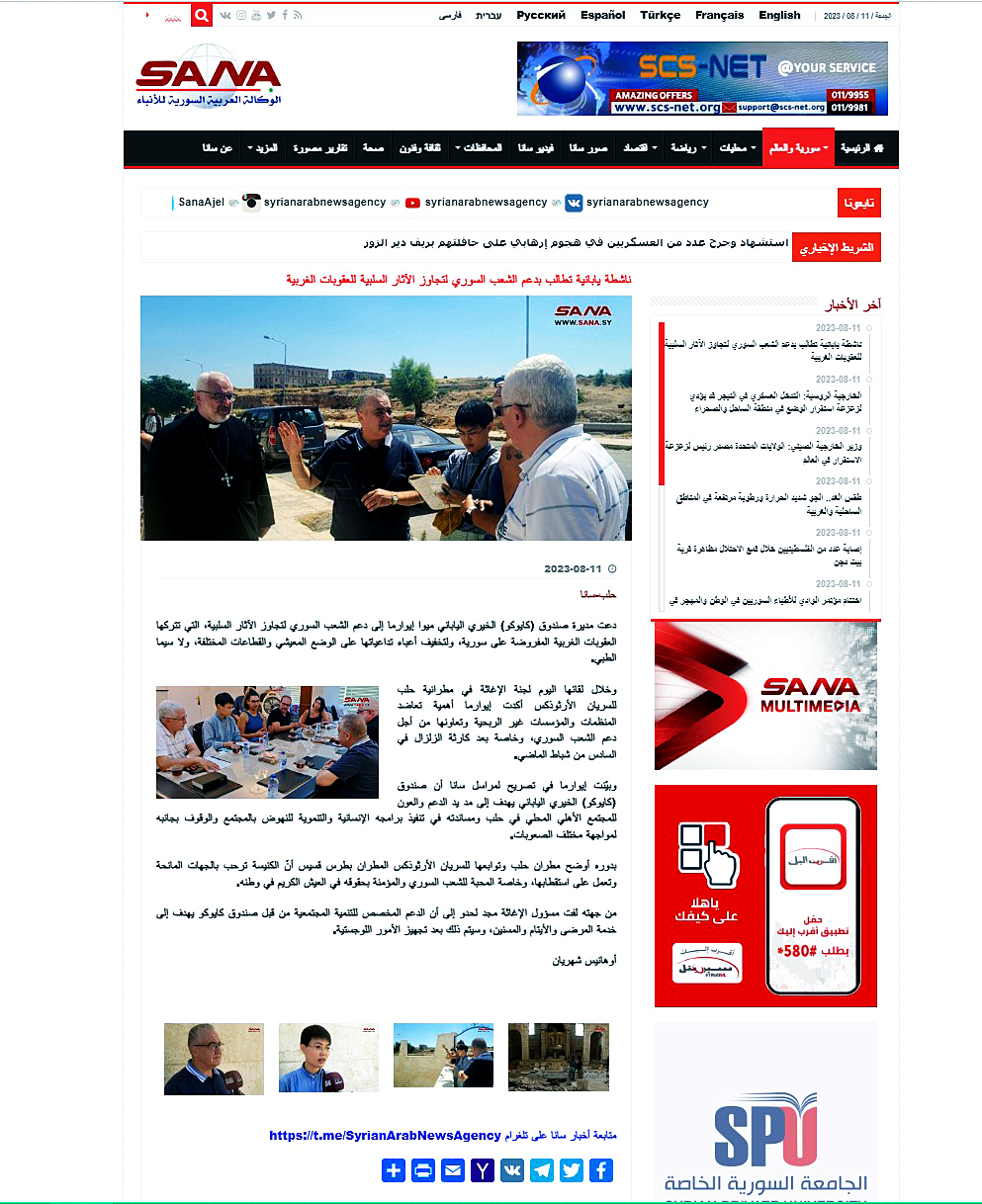
シリア 『SANA』紙(2023年8月11日付)。
北九州水害ボランティア 2023年7月8-12日
寺内ダムの放流。7 月 10 日午後 4 時 大島健二郎撮影。

福岡県糟屋郡志免(しめ)町 宇美(うみ)川の増水。7月10日午前8時。
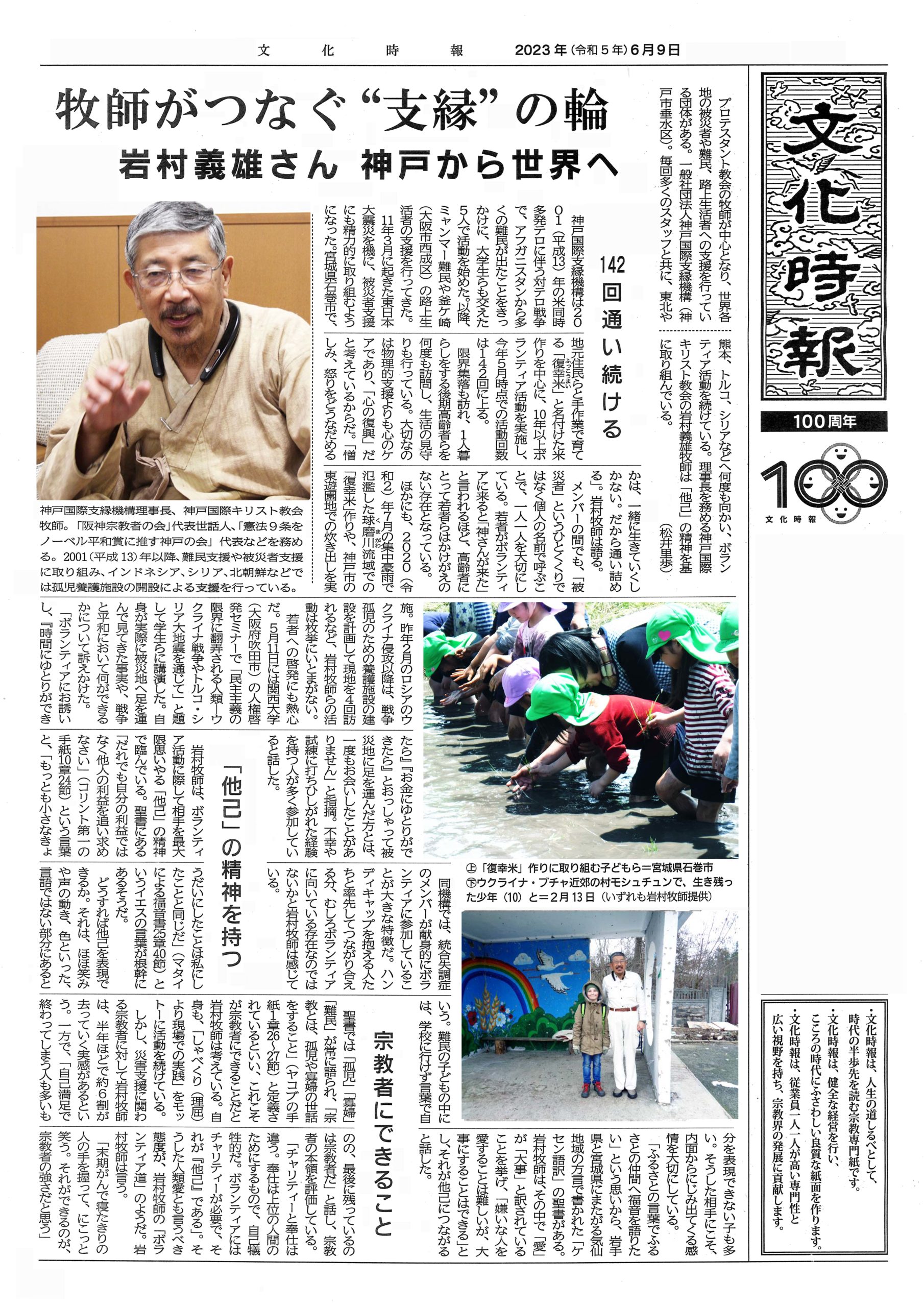
『文化時報』(2023年6月9日付)
球磨川(熊本豪雨)ボランティア(2020年)から3年目の「復幸米」づくり
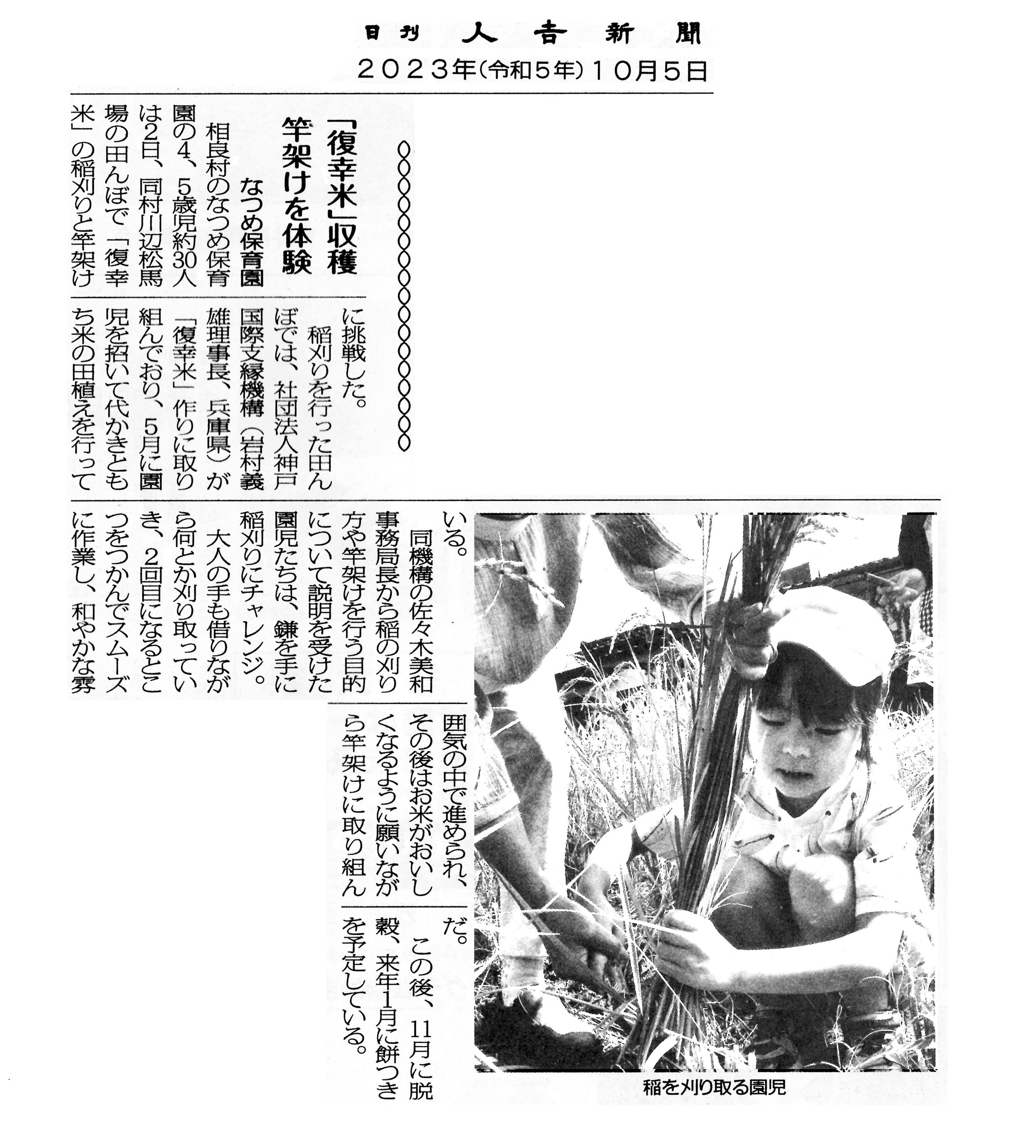
『人吉新聞』(2023年10月5日付)。
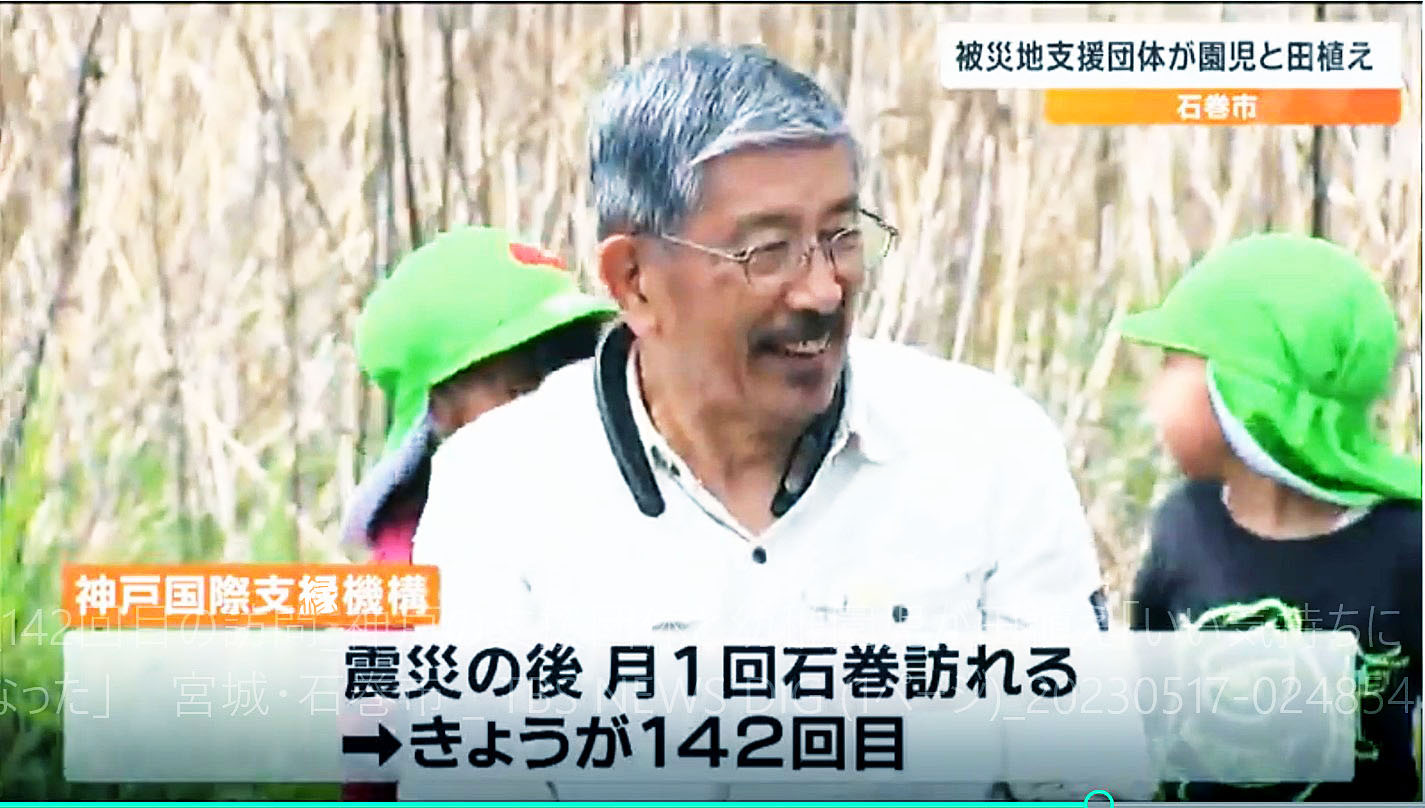
『東北テレビ』(TBC 2023年5月16日18:15-19:00 田植え)
脱穀 (同 2023年10月17日 18:15-19:00)
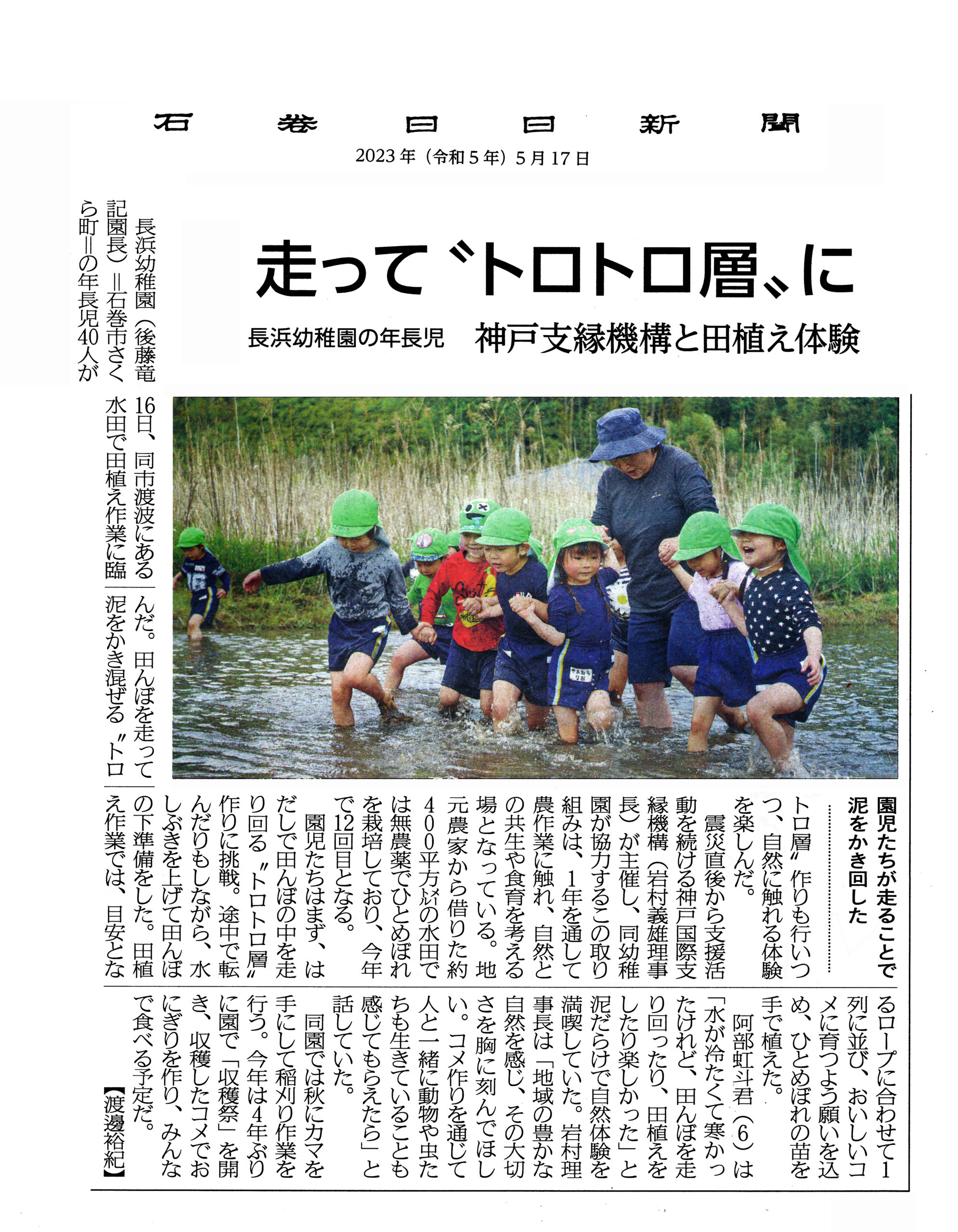
『石巻日日新聞』(2023年5月17日付)

『人吉新聞』(2023年4月26日付)。
141回目の東北ボランティア
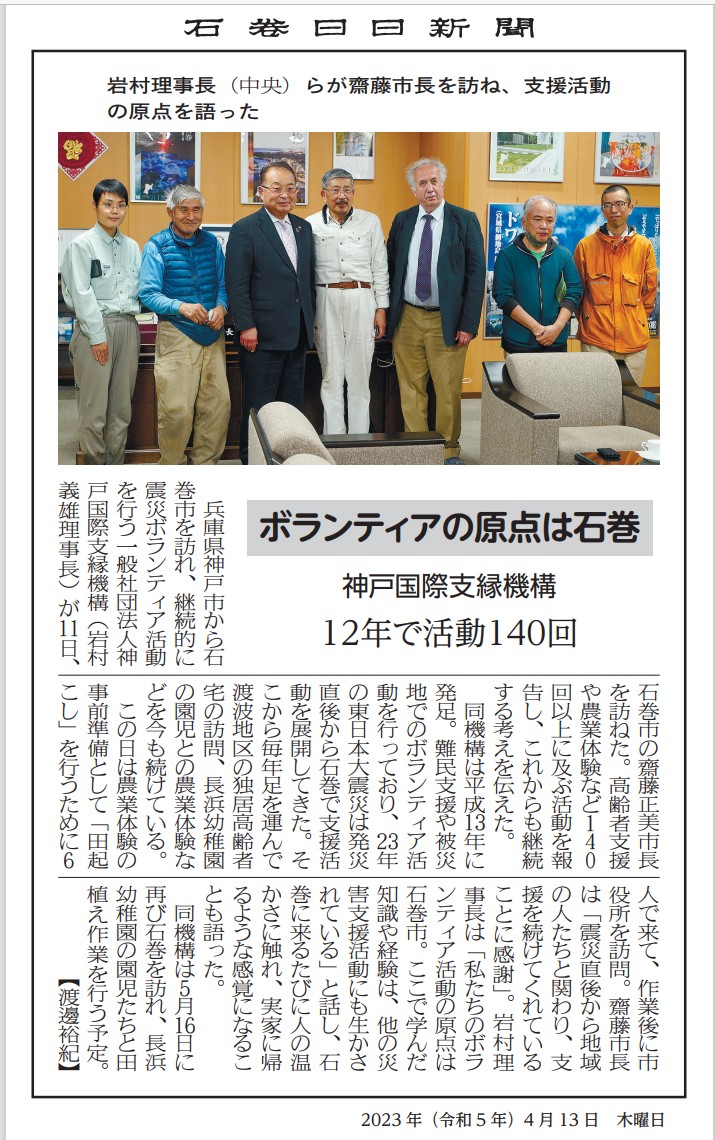
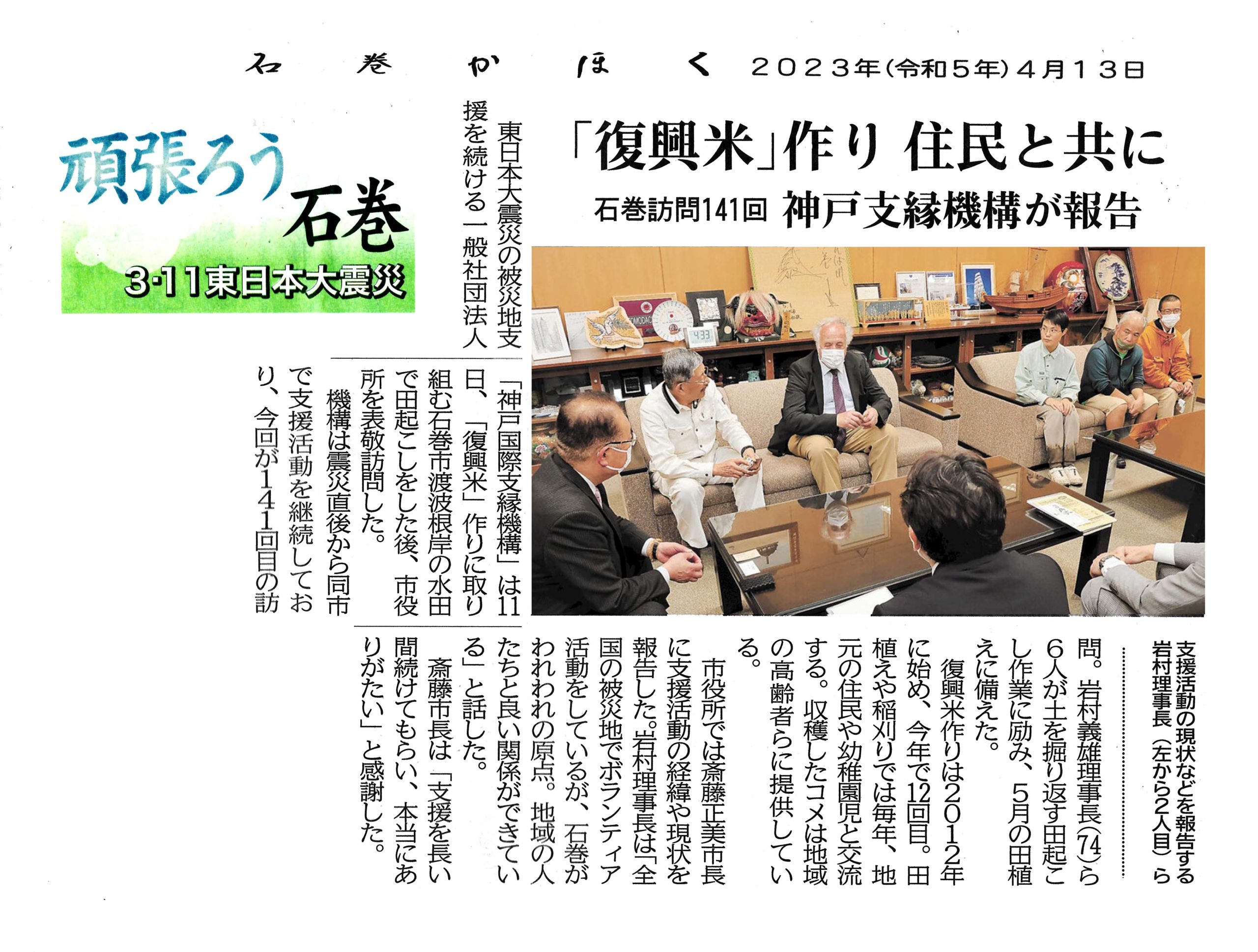
『石巻かほく』(2023年4月13日付)
『災害と共生』6巻 第2号(佐々木美和 大阪大学大学院 2023年 7-19頁)
『自然の回復,ひととの共生』(岩村義雄 大阪大学大学院 2023年 19-28頁)。“Resurrection of Nature, Coexistence of nature and human”(Yoshio Iwamura University of Osaka 2023 p.19-28)

『広報 さがら』(2023年2月号 8頁)。
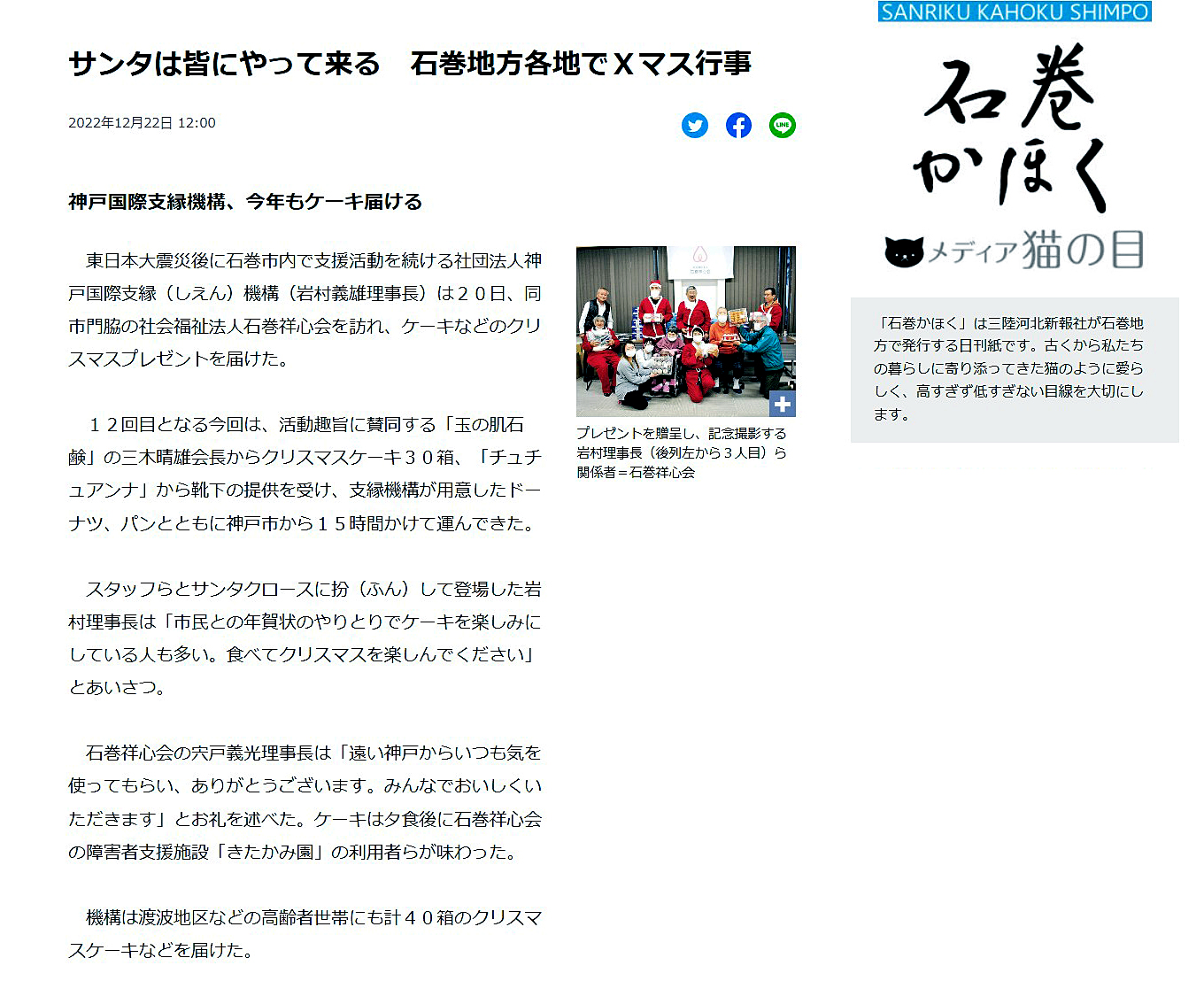
『石巻かほく』(2022年12月22日付)。
『福音と世界』誌(2022年12月号 30-35頁)。
- 『福音と世界』誌(12月号)

『石巻日日新聞』(2020年9月28日付)
「いのり☆フェスティバル2022京都」(キリスト新聞社主催)
ボランティア道に取り組むに際して,何を中心に,これまでぶれずに被災者に寄りそってきたかを出典。

2022年8月大雨
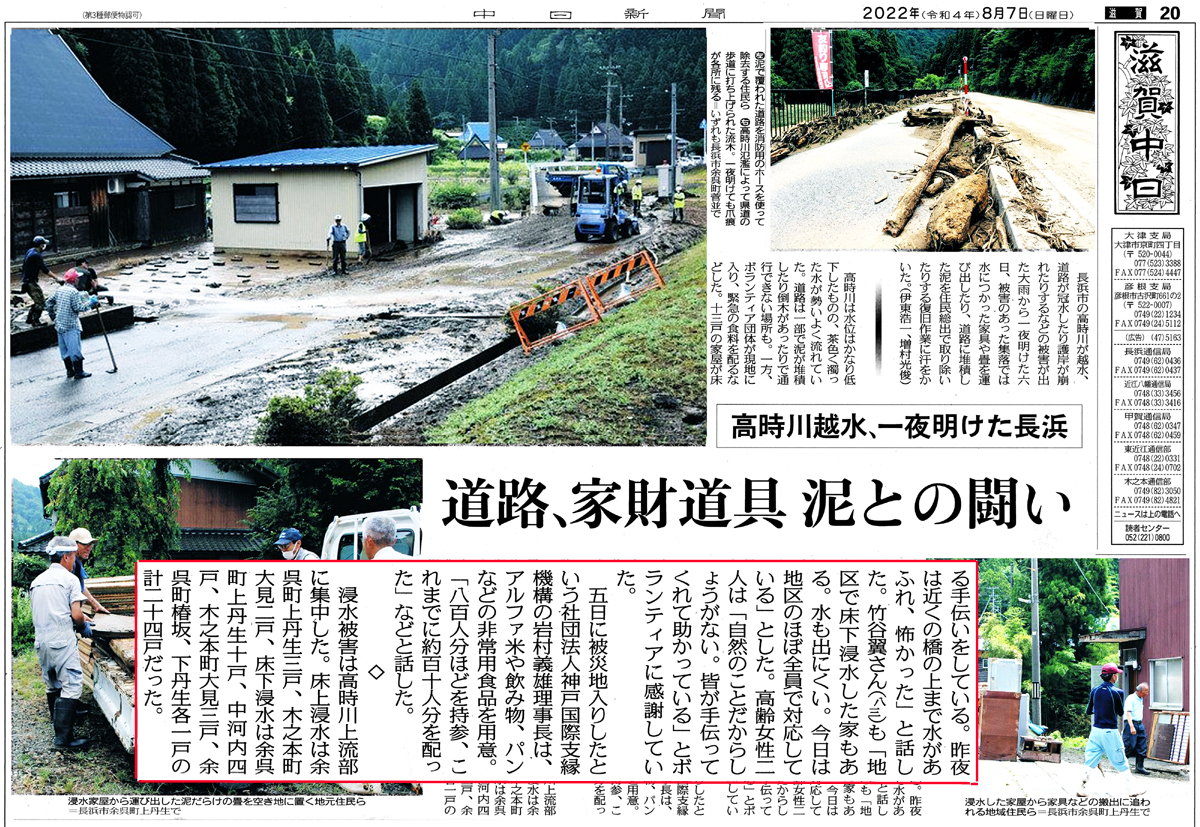
『中日新聞』(2022年8月7日付)。
「川と人間の相克と共生―丹生ダム建設中止地 ボランティア報告―」(英文付き)
“Conflict and Coexistence between Rivers and Humans: Volunteer Report of the Suspended Niu Dam Const”(20220808 Conflict and Coexistence between Rivers and Humans Volunteer Report of the Suspended Niu Dam Construction Site)
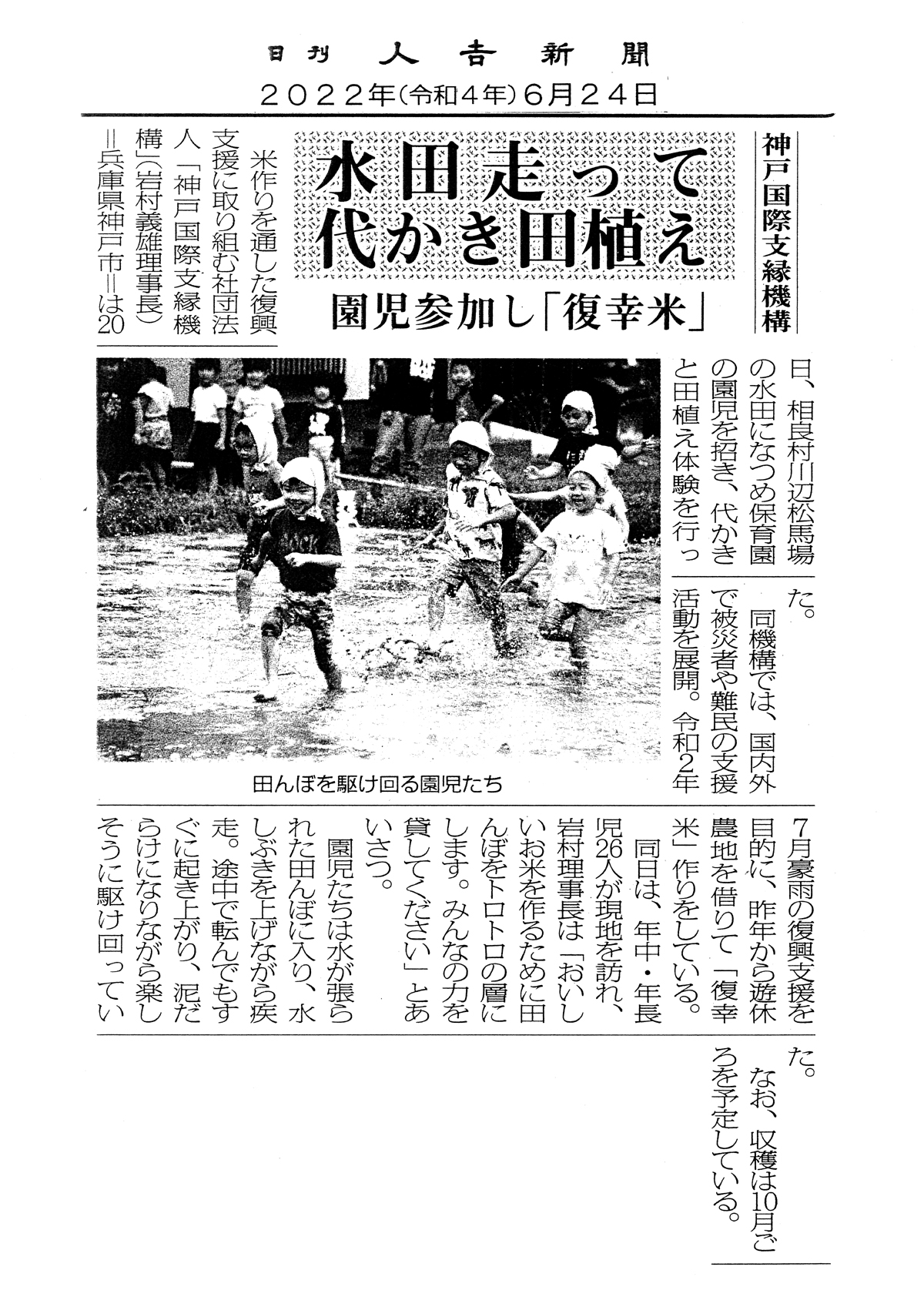
『人吉新聞』(2022年6月29日付)。
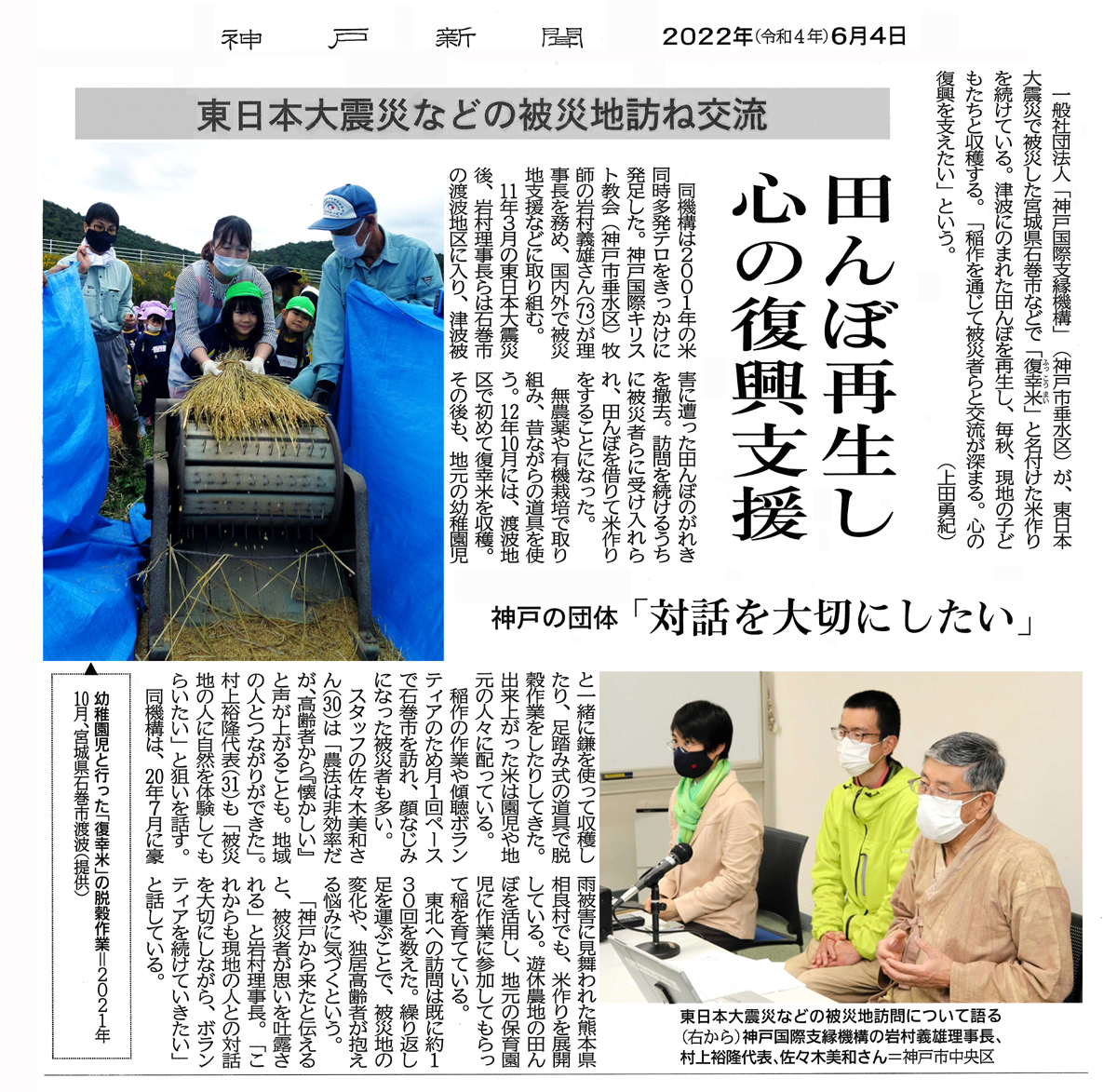
『神戸新聞』(2022年6月29日)。
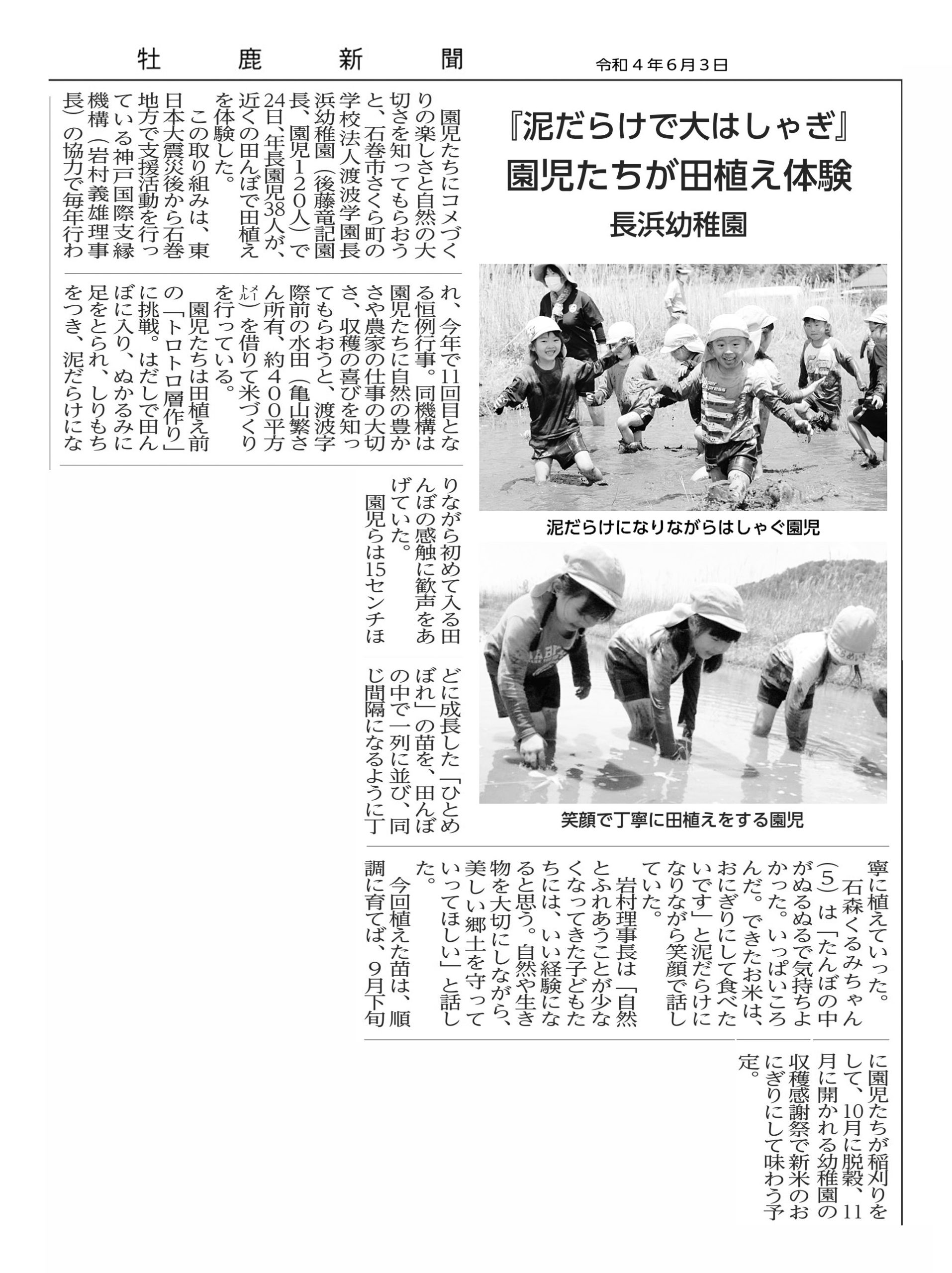
『牡鹿新聞』(2022年6月3日付)
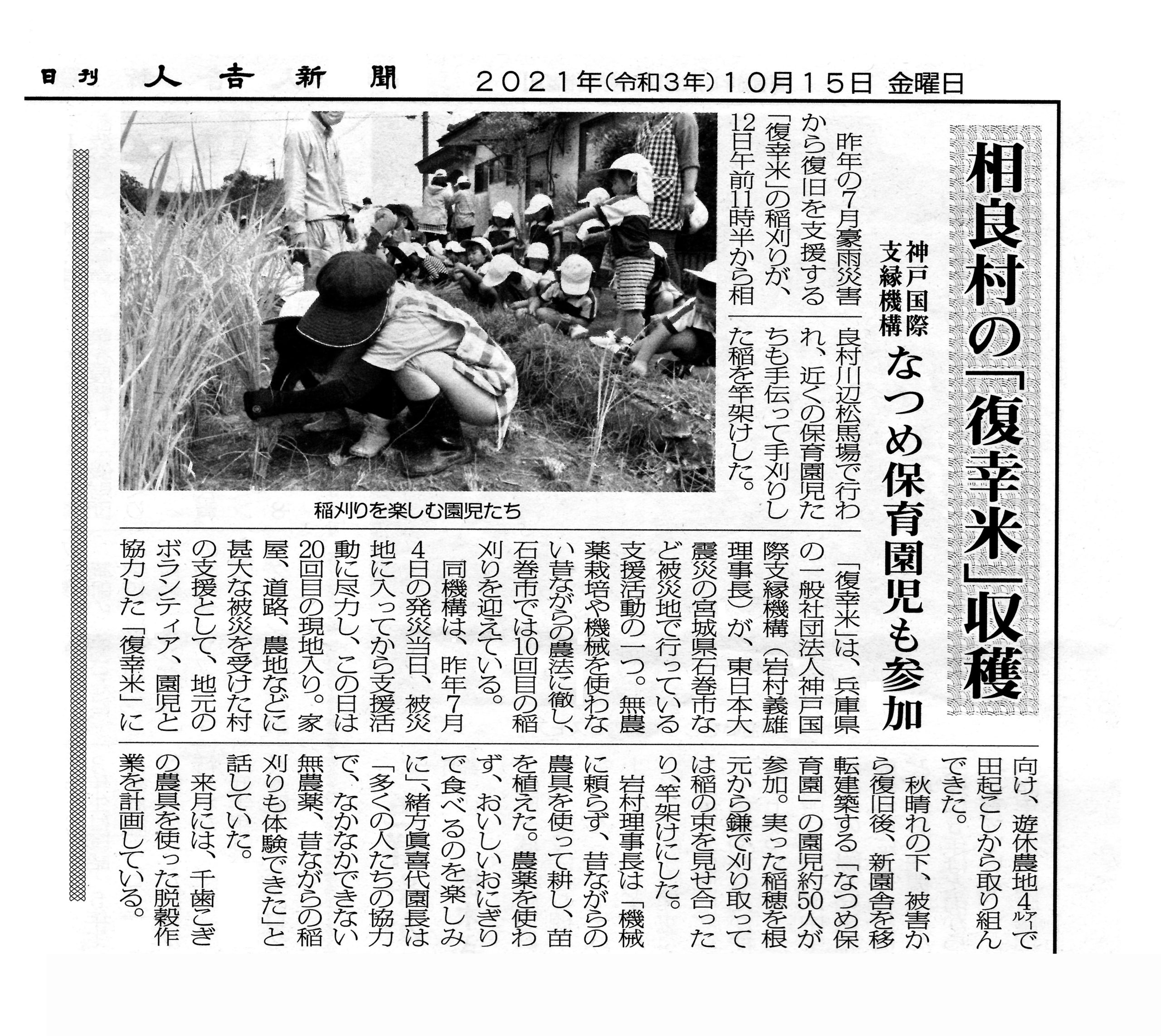
『人吉新聞』(2021年10月15日付)。
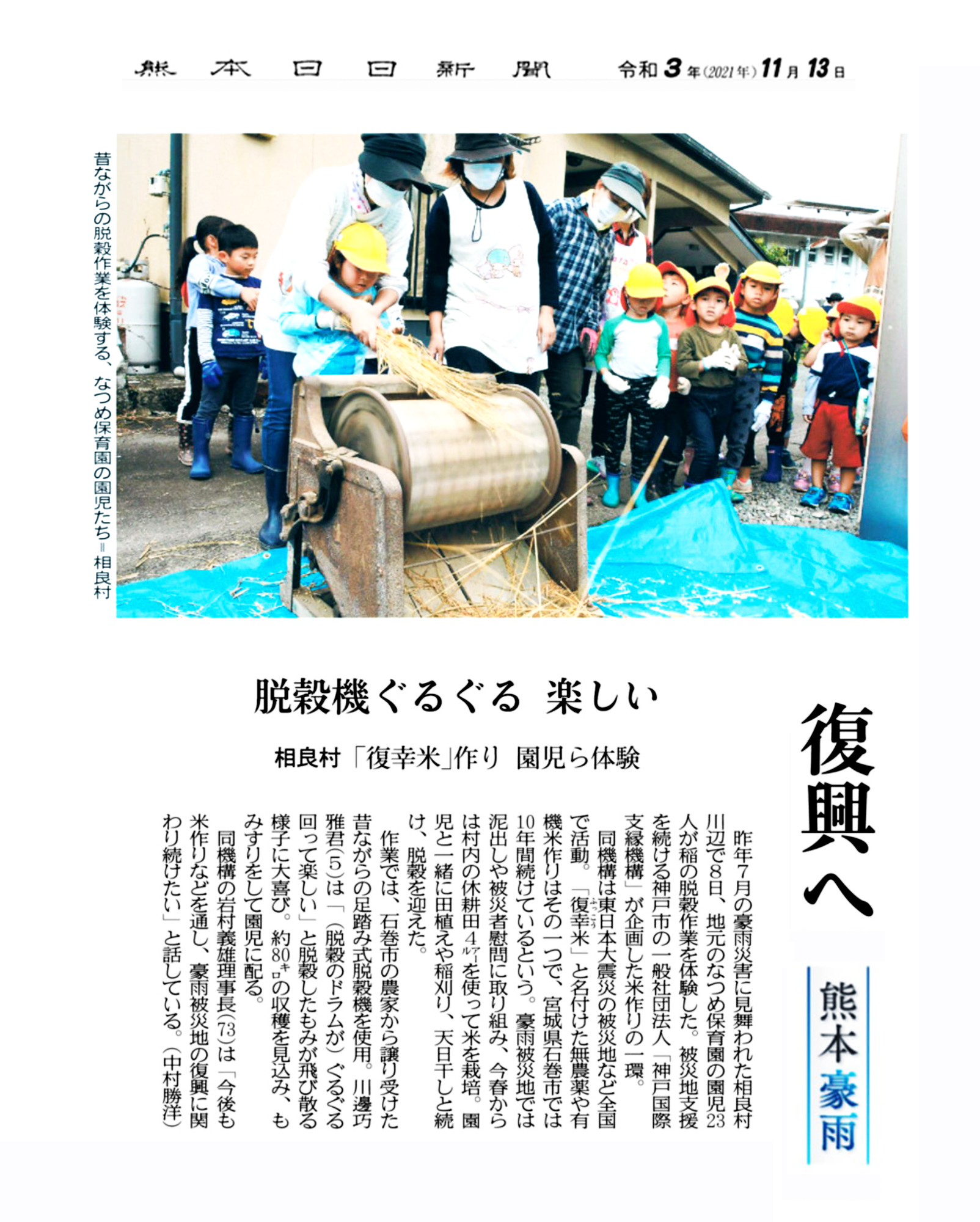
『熊本日日新聞』(2021年11月13日)。

季刊誌「支縁」No.35 (2021年5月 1&3頁から抜粋)。
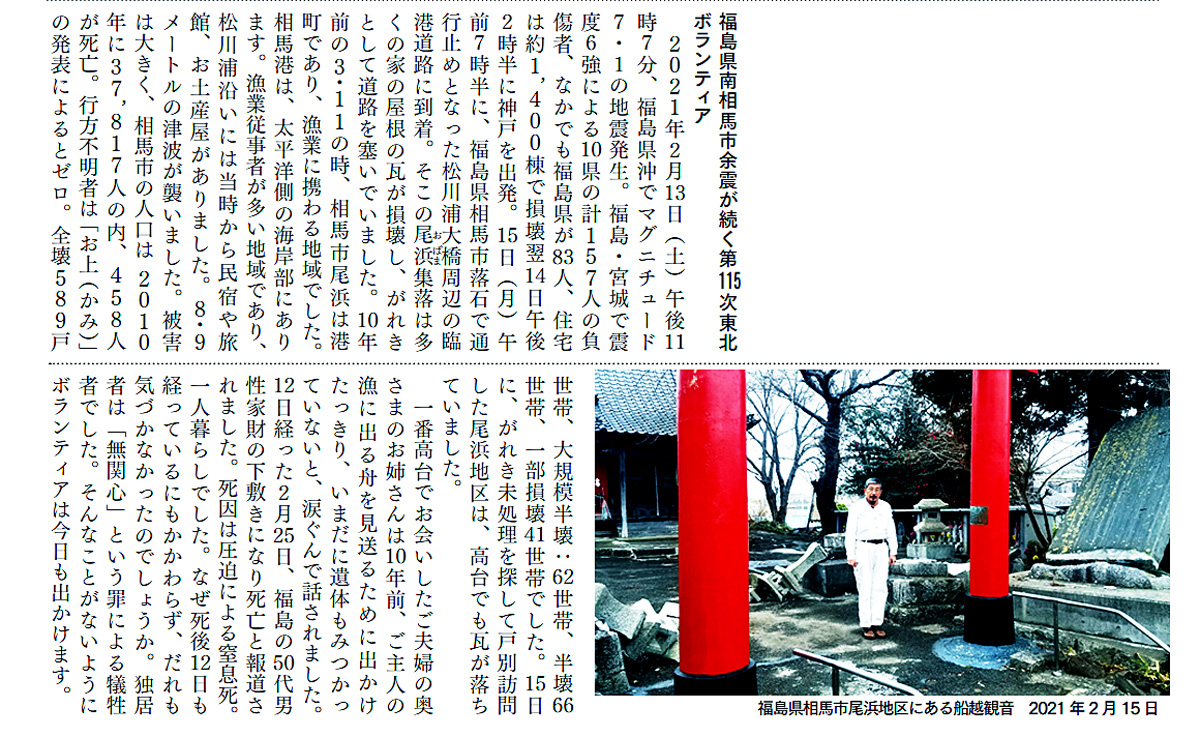
季刊誌「支縁」No.35 (2021年5月 1ページから抜粋)。
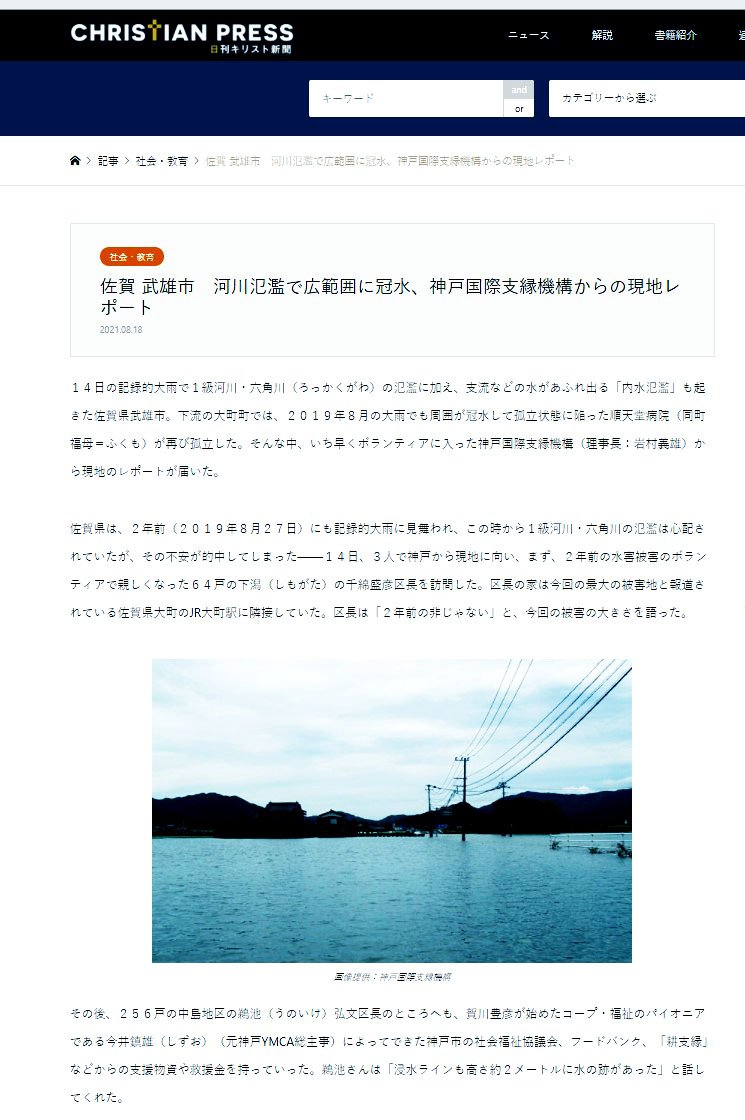
『クリスチャンプレス』(2021年8月18日付)
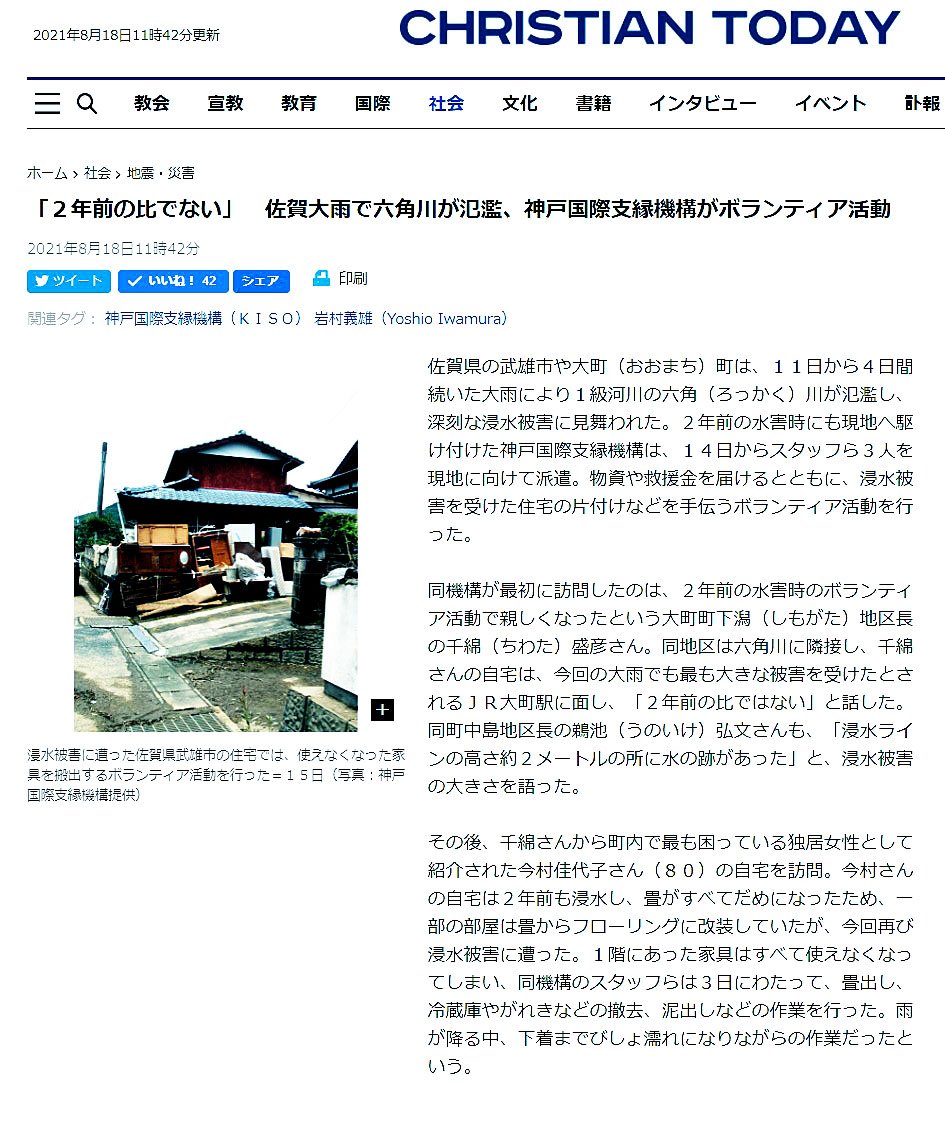
『クリスチャントゥデイ』(2021年8月18日付)
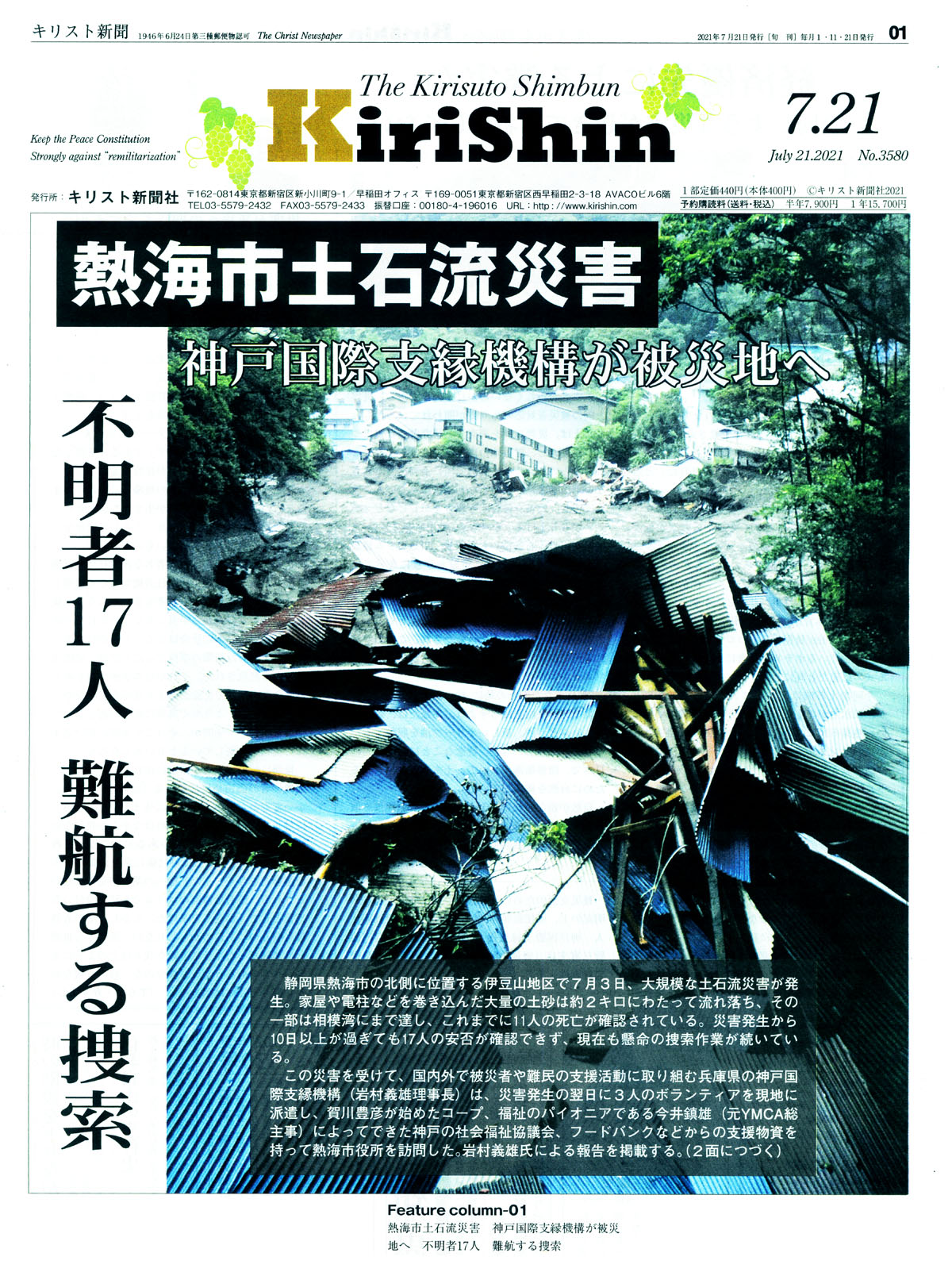
『キリスト新聞』(2021年7月21日付)。第二面に続く
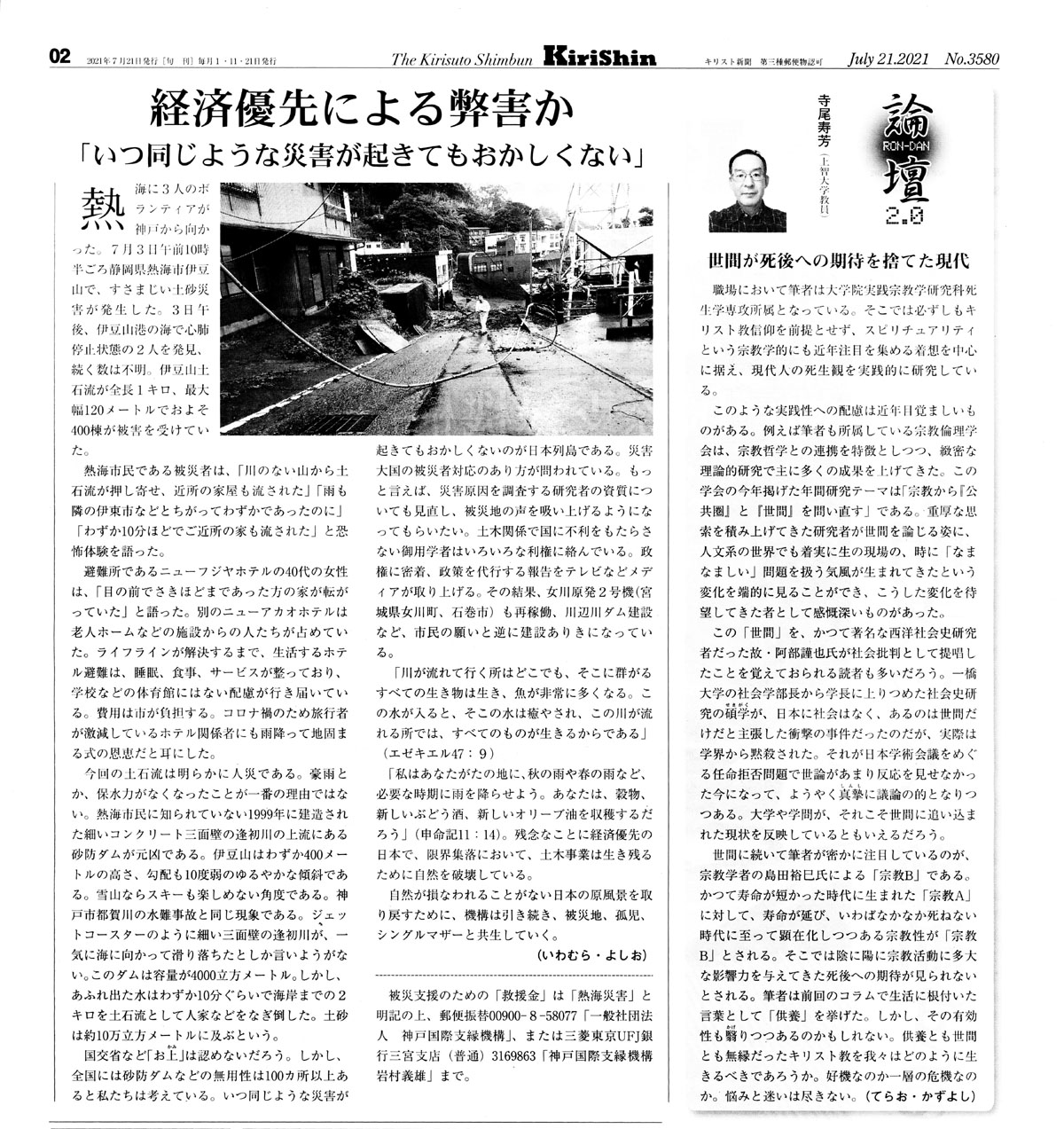
『キリスト新聞』(2021年7月21日付)。第一面から続く
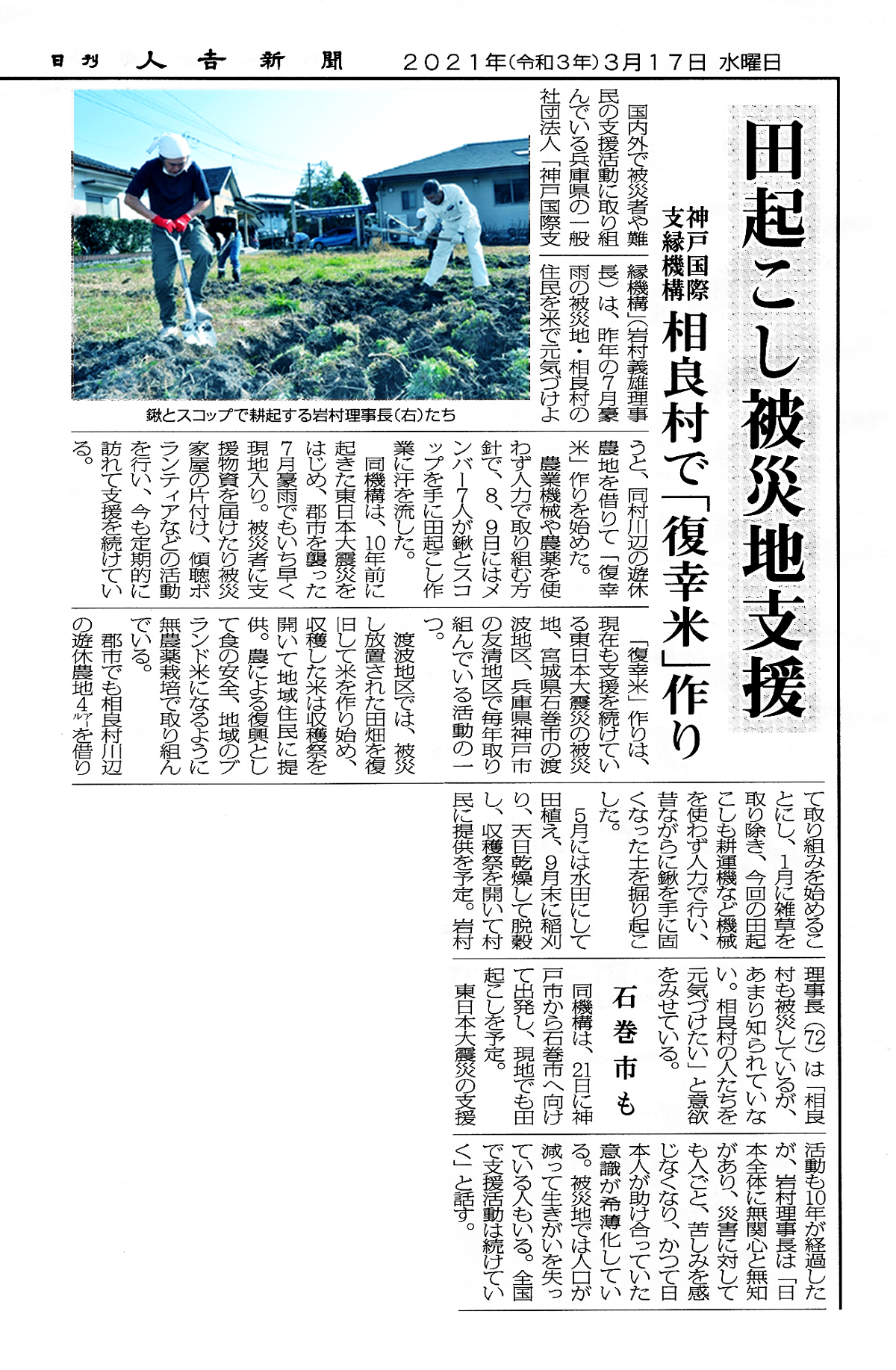
『人吉新聞』(2021年3月17日付)。
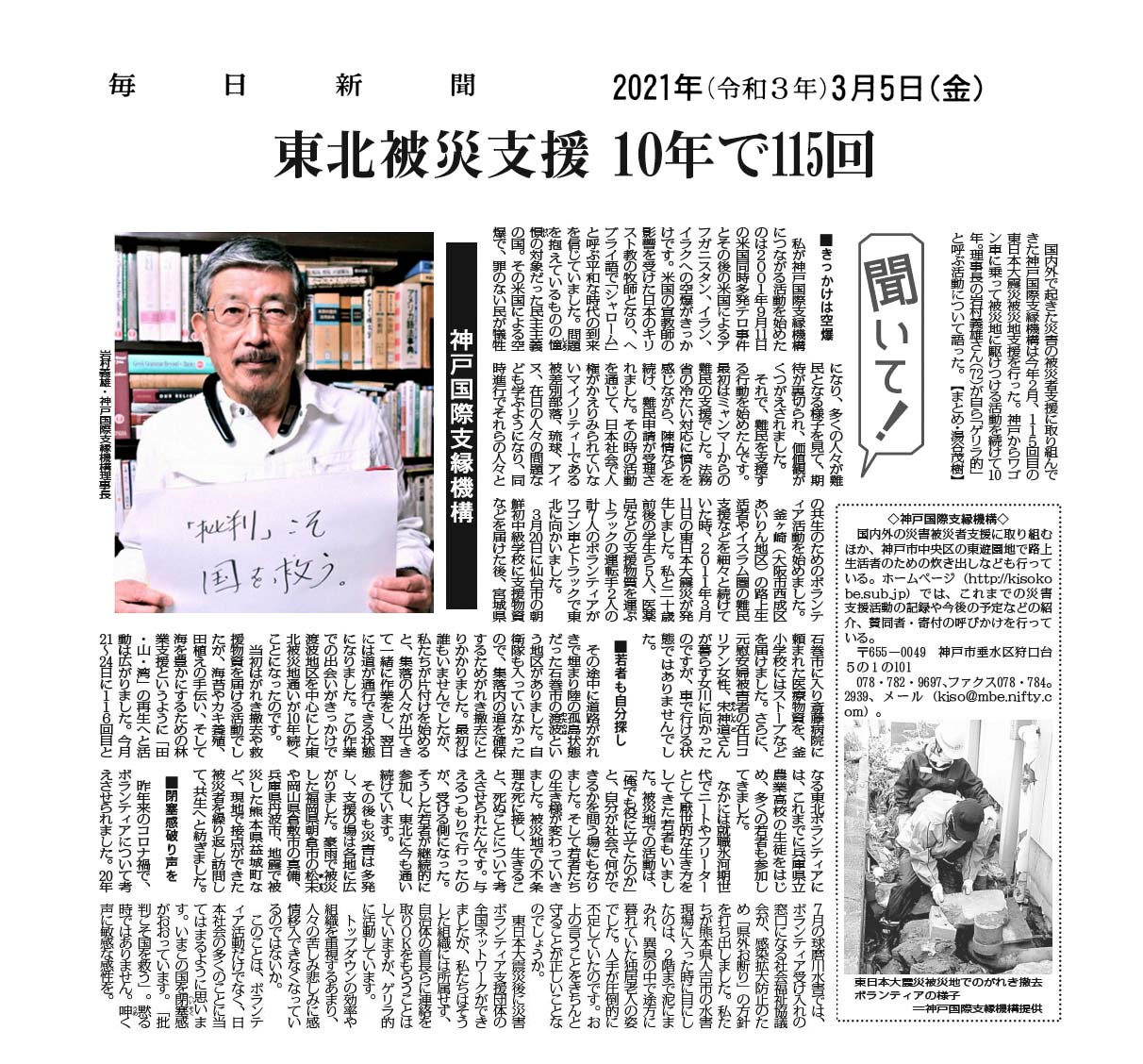
『毎日新聞』(2021年3月5日付)。
English 20210305 “Listen!Kobe International Sustaining Organization”.英訳
『クリスチャンプレス』(2021年1月12日付)
神戸国際支縁機構、トルコ沖地震を支援 孤児への関心が宗教間の対立を取り除く
『ソズキュ放送』Sözcü TV(2020年11月26日付)
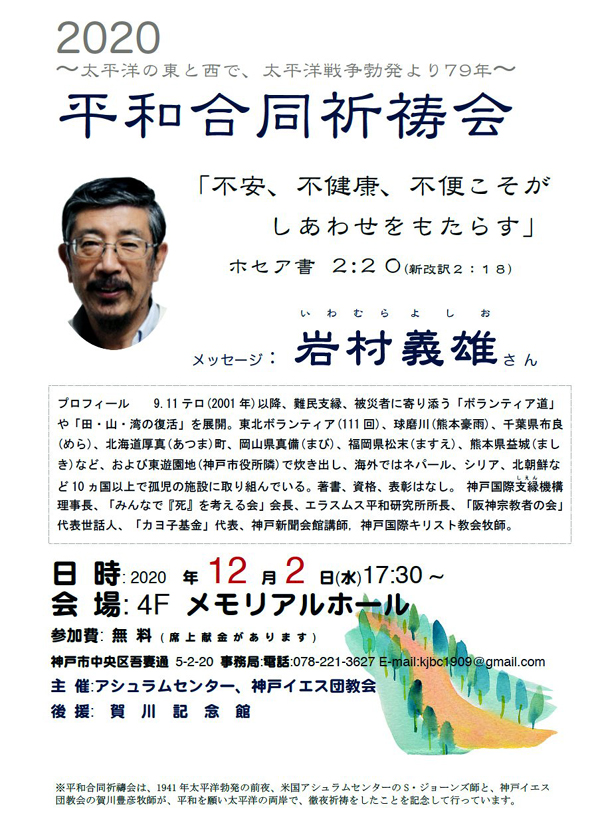
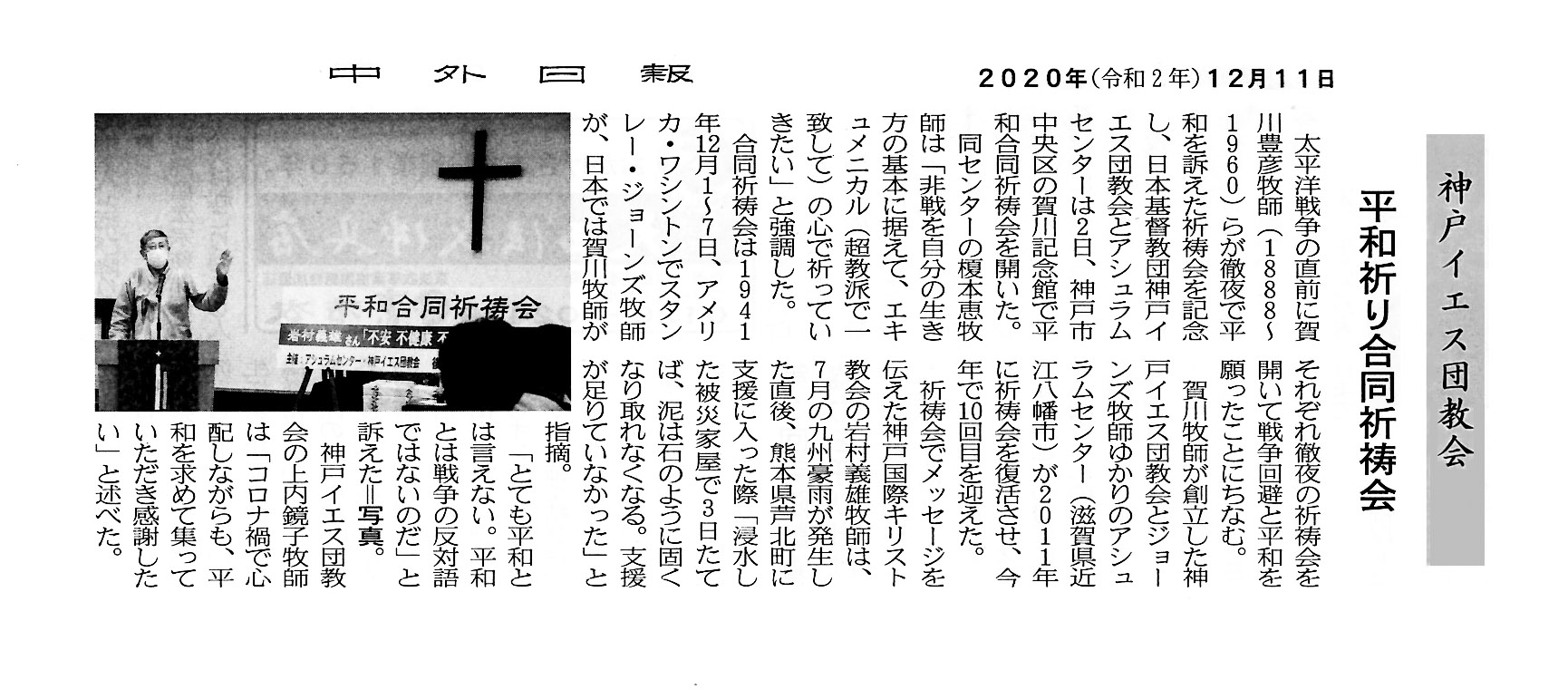
『中外日報』(2020年12月11日付)。
「随想随筆」(『中外日報』 2020年10月23日~11月20日付) 4回連載
「不安があってこそ喜び」①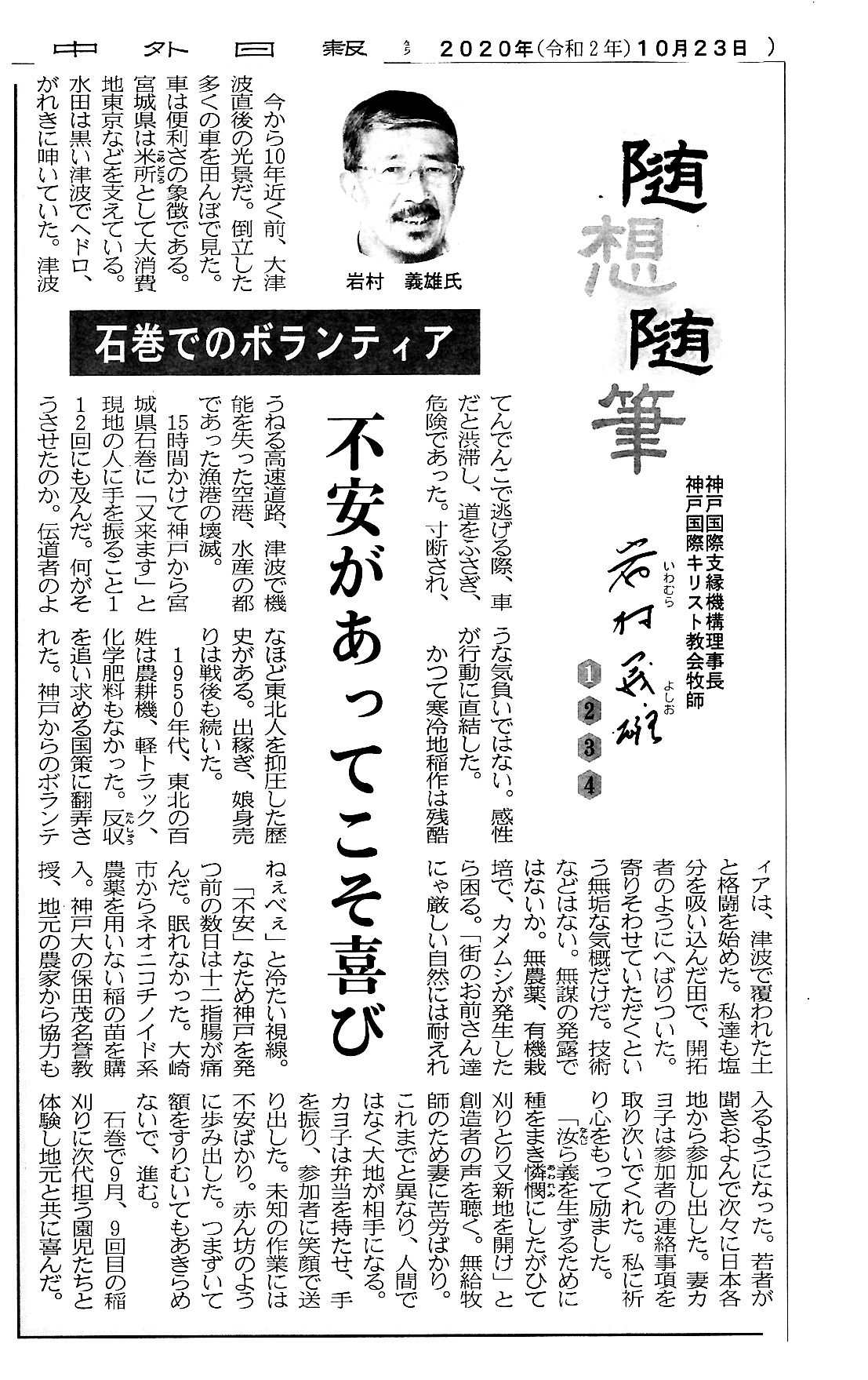
- 「不健康こそ喜び」(『中外日報』 2020年10月30日②)
- 「不便さの中にいのち」(『中外日報』 2020年11月13日③)
- 「市民の氾愛兼利」(『中外日報』 2020年11月20日④)
「随想随筆」(『中外日報』 2020年10月23日~11月20日付)の4回分の英訳
“Our delightedness brought from worries”
“Chugai Nippo”(Oct. 23, 2020)
Yoshio Iwamura Volunteer activities in Ishinomaki City
Director of Kobe International Sustaining Organization
Pastor of Kobe International Christ Church
It’s a scene just after the big tsunami that happened almost 10 years ago. I saw many cars stuck vertically in the rice fields. The car is a symbol of convenience. Miyagi Prefecture supports the large consumption city Tokyo as the major rice-producing prefecture. The paddy fields were moaning in sludge and debris brought by the black tsunami. During the time of escaping from the tsunami, it was dangerous to use a car since all of the cars were congested and clocked the roads. Highways were destructed and twisted, airports lost their functions because of the tsunami, and fishing ports that were the center place of fisheries were completely destroyed.
Our visit to Ishinomaki City Miyagi Prefecture through 15 hours of driving from Kobe by saying “We will come again” to local people reached 112 times. What made us do so? Our actions didn’t come from the act of an evangelist. Our sensitivities were directly linked to our actions. In the past, there is a history that rice cultivation in severe cold regions cruelly made Tohoku people suffer. People went away from home to work in the city and daughters had been sold even after the war.
In the 1950s, there were no farming machines, small pickup trucks, or chemical fertilizers for Tohoku farmers. The peasants were at the mercy of the national policy “tanshyu (反収: the rice yield per 10 areas)” that was driven by the government. Volunteers from Kobe have begun to struggle with the soil covered by the tsunami mud. We were also in a blind effort like pioneers to the salty rice fields. We only had an innocent spirit of being with local people. We didn’t have any skills. It was probably a reckless action. It is a problem if stink bugs appear because of the pesticide-free and organic farming style. And we felt cold looks, “You all from the city can’t bear the severe nature”.
I felt pain in my intestine duodenum for a few days before we leave from Kobe because of my “anxiety”. I could not sleep. We purchased rice seedlings that do not contain neonicotinoid-based pesticides from Osaki City. We also started to receive support from Yasuda Shigeru, Professor Emeritus of Kobe University, and also local farmers. Young people heard about our activities and began to participate in one after another from all over Japan. My wife, Kayoko, took care of the management of contacts between participants. And she encouraged me with her prayers.
We listen to our creator’s voice, “Sow to yourselves in righteousness, reap in mercy; break up your fallow ground”. Since I am an unpaid pastor, so I kept giving hard time with my wife. Unlike in the past, not humans but the earth became the other party to us. Kayoko handed us her hand-made meal boxes and sent out the participants with her smiles while waving her hands. We were just worried about undiscovered tasks. We began to take our steps like a baby. Never give up even if we stumbled and made scars on our foreheads, and just keep going.
In September, we experienced with children, who will be responsible for the next generation, that our ninth rice harvest in Ishinomaki City which is the place of agriculture, forestry, and fishing. We were delighted to work together with the locals.
”Unhealthy is the true joy for ourselves” 2nd
“Chugai Nippo”(Oct. 30, 2020)
Hiroshima and Nagasaki continuously have been moaning after the war. Fukushima was also shaken by the core meltdown.
Industry, government, and scholars have been saying “there will be no immediate dangers”. People who voluntarily evacuated from Fukushima to other prefectures are treated as “unhealthy” ones. They are seen as a sick person by people of evacuated places with disapproval eyes. Even though they are healthy, they are treated as a sick person. It was just like a witch-hunting in the European medieval era.
Voluntary evacuees from Fukushima encountered excessive values of Japanese people’s “health”, “youth” and “beauty”. Abnormal obsession over health is similar to fascism. Narcissistic personality worship is a religion that is sitting in Japan. Many Japanese believe that they are “living a life of saving grace”.
After the Meiji Restoration, healthy people isolated people affected by Hansen’s disease (leprosy). They have discriminated against Ainu, Ryukyu, and Koreans living in Japan who were forced to live in poor “places” that did not get any benefit from civilization. Such pride is an act of perversion. There are no serious symptoms on the side that have been ridiculed. They have not infected others. There is no reason to be repelled and excluded. Rather, the side that is proud of its health has a spiritual myocardial infarction like “the Emperor’s New Clothes”.
“The government” turns a blind eye to the prejudice against voluntary evacuees from Fukushima to other prefectures. As a result, children of evacuees blame their parents, saying “Let me decide whether I will go back or not”. Children are crying because of bullying from friends, “Don’t come and pick me up at school by the car with Iwaki Prefecture number plate”. Friends of their hometown accused them of being a traitor, “Although there are people who are working hard against the nuclear power plant incident, you abandoned Fukushima and ran away”. The country has cut off rent support for voluntary evacuees. Evacuees feel lonely like wandering people in a foreign country and deeply regret even if they have been not doing anything wrong. They work during the daytime for their living, so they cannot take a health checkups. Unhealthy voluntary evacuees are covered by misery.
Sumio Konno (56 years old), who had worked at the Onagawa Nuclear Power plant in Miyagi Prefecture at the time of 3.11, is the leader of the Kodomo Datsu Hibaku Saiban (a trial for de-exposure of Children). In this year August, I met with him at his house in Namie-machi Fukushima Prefecture, just before the demolition. 20,262 people have been evacuated from Namie-machi nationwide.
Voluntary evacuees cannot return to their original home because of “前門拒虎, 後門進狼 (Zenmon no tora, Koumon no okami: A tiger at the front gate, a wolf at the back gate)”.
He says that; Fukushima Prefecture cannot escape internal exposure from a dangerous “insoluble microparticle (hot particle)”. I myself thought that the “unhealthy” people who evacuated outside of their prefecture and have been experiencing difficult times are truly healthy people.
“Life exists in an inconvenience” 3rd
“Chugai Nippo”(Nov. 13, 2020)
Convenience, efficiency, and capability would be a modern demon’s gate.
We asked Mr. Okuni Ryusho, the chief priest of a Shinto shrine, to give us the prayer of best wishes before planting rice in Watanoha Ishinomaki City. He said, “It consists of the rising like a growing young reed”. He grieves over the fact that the disappearance of the nature of the paddy fields in “瑞穂国(Mizuhono kuni, harvest country: an ancient name of Japan) by concrete.
It has been 9 years passed since the reconstruction. The roads, streets, and shopping streets are also full of convenience, comfort, and service. On the other hand, I can see some social situations that rush to pleasure, addiction, and consumption for seeking stimulation.
This year, heavy rain attacked the southern part of Kumamoto Prefecture. An opinion on the construction of the Kawabe River Dam at the tributary river of the Kuma River was raised for disaster prevention. The town council also urges the prefectural governor to approve. Why are the financial community, administration, and scholars enthusiastic about making the Kawabe River, which is the clearest stream in Japan, muddy with modern technology? Is dam construction correct? The country promoted efficiency and rationalization even before and during the war period. Our country imitated Germany to aim for a Technocracy state. One of the huge public works projects was the Sup’ung Dam that locates along with Korea – Manchurian border.
Japanese imperial engineers were crazy to colonize Asian countries efficiently. Hydro mafia such as general contractors has prioritized technology investment even after the war. Sabo associations in each prefecture are organic organizations in order to maintain “the civil engineering state”.
Is the landscape of bridges, railway bridges, and dams a permanent dream? The existence of Japanese trout has its essence in the river. The water is polluted by concrete. River fish moan at a red light for their survival.
Speed, comfort, and convenience bring severe conditions to nature. Since July 4th, we have engaged in removing mud, debris, furniture, and other things every other week. It is inconvenient without using heavy machinery. However, you can talk to the local people at home face to face. We can listen to the horror experiences of the elderly living alone people. And then, many local citizens of the Hitoyoshi area only speak against the dam. However, assembly members and chiefs are supporting it. Who would be pleased among local citizens with the environment that cannot allow doing river play, rafting, and canoeing through the clean Kuma and Kawabe River?
A victim introduced me to a person who has a mission to protect the clear river stream. A doctor who has been visiting his patients in the mountains is called Ogata Shyunichiro. He spends hours climbing the mountains to see the sick. He has been worked for Minamata disease since he was a student. Last year, he received the “Akahige Award (a special award for the one who works and treats abandoned local people very closely)”.
When I met with him, he said that raising riverbanks, excavating the riverbed, and housing land elevation is more important than dam construction. I just imagined. There is no fear of the release or collapse of the dam. We don’t have to abandon our submerged hometown.
I was convinced that life would rise up significantly from the inconvenience.
Bring Citizen’s “氾愛兼利 (Han-ai-ken-ri: Love all people in the same way and share profits fairly)” to the community”
4th
“Chugai Nippo”(Nov 20, 2020)
Even inside and outside the country, people have not healed at all due to natural disasters. What can people do? Victims who have lost their houses, economic depression, and closed-shop streets look lonely. It cannot receive any generous relief measures. In July 2017, the village disappeared due to the overflow and collapse of the Sabo dam at Masue Asakura Fukuoka Prefecture. 40 dead and 2 missing. Misumi Kajiwara was expelled from her undamaged house for the construction of a new dam. It is a move-out life and even she is paying her own rent of 50,000 yen. Citizens cannot disobey the order of “public works”. A resident briefing session by the Ministry of Land, Infrastructure, Transport, and Tourism is just a fixed game. The administration, government offices, and general contractors are ruthless themselves. The community has collapsed. Why does it call “the anger of Hiroshima and the prayers of Nagasaki”? There are many hidden Christians in Urakami, Nagasaki. 8,000 of the 11,000 believers were Atomic Bomb Victims. Nagai Takashi is a Catholic believer, who worked to rescue the victims, even though he was exposed to radiation and seriously injured. He prayed that the sacrifices of the “Great Holocaust” were offered to God. His influence is great. The anti-nuclear movement is not as untensed as Hiroshima. Nagai spirit continues to the next generation. The government had located Dr. Yamashita Shunichi (former vice-president of Fukushima Medical University) to Nagasaki University, who is a descendant of hidden Christians. He is a world leader in radiation exposure research on the Chornobyl disaster. He gave a lecture in May 2011, “Who will carry the cross of Fukushima?” He became a spokesman for “industry, government, scholar” by saying “There are no worries in health risk”, “It is safe even at the level of 100 millisieverts”.
On the other hand, Catholics and religious people have raised their voices of “anti-nuclear power” on the front lines. Scholars have a mission to study “safety” and bring “security”. However, “government’s mouthpiece scholars” support nuclear power plants, dam construction, and public works. They are famous for TV viewers. There is no “publicness” in the power without emotional touch to the vulnerable people. Let’s get “public / together” back into the hands of the people. Response to oppressed voices should be carried from “administration” to “people”.
By the way, even we hear the news of the earthquake and tsunami in Turkey, the voice of rescue doesn’t raise. Is it because of standardized education by a public authority? There is a tendency that people don’t raise their spontaneous voices. There is information control under the situation of the Corona crisis. However, Japanese people have “氾愛兼利(Han-ai-ken-Ri: Love all people in the same way and share profits fairly)” inside of their hearts. When I asked for “hand-made mask support” for orphans overseas, about 20,000 masks arrived from all over Japan. In late November, we give masks to orphans in a disaster-affected area in Turkey. Our “Kyoshin (共振: Sympathized resonance )” to the earthquake and tsunami is not the intention of economic leaders, administrators, and scholars. Will of people make use of the communities inside and outside of the country?
『Kiss FM KOBE』(2021年8月7日)。
『Kiss FM KOBE』(2021年8月14日)。
― 災害と聖書の神―貧しい人・被災者は幸いである ―
『クリスチャントゥデイ』(2019年6月25日付)
完全原稿 ⇒ キリスト教と災害 「災害と聖書の神―貧しい人・被災者は幸いである」
Complete manuscript of English ⇒ Christianity and Disaster “Disaster and the God of the Bible-The poor and the victims are blessed”
主日説教
2019年6月9日
神戸国際キリスト教会
牧師 岩村義雄
主題聖句: イザヤ 61章1節 「主なる神の霊が私に臨んだ。主が私に油を注いだからである。苦しむ人に良い知らせを伝えるため 主が私を遣わされた。心の打ち砕かれた人を包み 捕らわれ人に自由を つながれている人に解放を告げるために」。
<序>
災害の実態 3.11から3000日を迎えました[1]。宮城県石巻市だけでも4千人が災害の犠牲になられました[2]石巻市は人口が県下で2位から3位に転落しそうです[3]。水産の都として国内でも突出した地でした。しかし,地震,津波からの復興は遅々として進みません。仕事もなく,高齢者による惣菜などの万引き件数が増えています[4]。飢えておられるのです。貧しいのです。苦しんでおられます。2018年末でも,2353件の被災者家屋は傾いたままです[5]。仮設住宅から復興住宅へ移動したものの孤独で泣いておられます。独居自死になんの手立てもできていません[6]。復興の谷間にいる人々に対して,無関心の寒気団が日本全体を陣取っています。人口減対策や地域活性化の担い手を志す人材は不足しています。つまり,東京などの都会との格差は大きく,構造的な危機に直面しています。
東京オリンピック,大阪万博や,コマーシャルに触発された裕福な生活を追い求める社会構造は,被災による失業や富から見離された絶望,貧困への配慮をしていません。
(1) 災害とは
災害(災い,災難,苦難)について,旧約ではh[‘r’; ラア,@g<n< ネゲフ(7回),hK’m;; マッカー(48回),hA’hホーヴァー(3回), hr’c’; ツァーラー(71回), hp’GEm; マッゲファー(26回)などのヘブライ語があります。「h[‘r’;; ラア」(悪)は旧約に345回出ています。創世記の「善悪の知識の木」は“b/f トーブ(良い)”と“ラア(悪い)”から成り立っています。「光を造り,闇を創造し 平和を造り,災いを創造する者。私は主,これらすべてを造る者である」という神の歴史に介入なさる在り方は,「平和(~Alv’シャローム)」と「災い(ラア)」を創造[ヘブライ語arBバラー]なさいます。(イザヤ 45:7)。
神が「災い」をもたらす方とは一般にはすんなりと受け容れられていません。むしろ人類を苦しめてきた諸悪の根源はサタンと考えるのがキリスト教界でもあります[7]。本論は愛ある神の本質を否定しているのではありません。聖書は一貫して二元論ではないことに思いをはせていただきたいのです。ゾロアスター教などペルシアの宗教は善悪闘争の歴史の影響を受け,神とサタン,善と悪,光闇の対立の決着という終末論がいつの時代も世を風靡してきました[8]。しかし,最初から神に反逆する対抗馬のように悪魔がいたのではありません。「甚だ善かりき(トーブ)」通りでした。(創世記 1:31)。万事,神の御心のままに始まり,御心のままに神に戻るようになっています。
(2) イエスの宣教
a. 貧しい人々への福音
イエス・キリストは公生涯の冒頭で,「主の霊が私に臨んだ。貧しい人に福音を告げ知らせるために 主が私に油を注がれたからである」,と「貧しい人」への福音を届けるために登場されました。(ルカ 4:18)。会堂で朗読されたイザヤ書の言葉について,文脈で,イエスは「この聖書の言葉は,今日,あなたがたが耳にしたとき,実現した」,と明言されました(21節)。つまり,福音とは,4世紀以降の西方教会のように伝道して,洗礼を授け,信者数を増やすことが核心ではないです。むしろ神ご自身が卑しめられ,未信者のフィールドで自ら貧しい姿を示されました[9]。
なぜなら,神は「なお,低く下って天と地を御覧になる」,と書かれているように,「低く」(ヘブライ語lpvシャフェール ≪低める,沈める,落とす,へりくだるの意≫なられる方だからです[10]。(詩編 113:6 参照 出エジプト 3:8, イザヤ 31:4)。
キリストは,イザヤ書の「福音」(ヘブライ語rc’B;バサール)をまず「苦しむ人」(ヘブライ語wn”[‘ アーナーヴ ≪貧しい人≫の意 旧約に25回)に流し出すミニストリーを開始なさいました[11]。
b.「正義」と「秩序」
「貧しい層」に対して「支縁」することは,古今東西,キリスト教以外の宗教者,諸団体,古代オリエントの民族が施してきたことも聖書以外の記録に残っています[12]。
ただし聖書の神は,いささかちがいます。「正義」と「秩序」の関係が異なります。コンスタンティヌス帝[280頃-337年]が国教と定めて以降,キリスト教は地中海沿岸から拡がりました[13]。皇帝は「秩序」をもって,世界歴史において最長不倒の帝国を維持しました。「この民は唇で私を敬うが その心は私から遠く離れている。空しく私を崇め 人間の戒めを教えとして教えている」,と「人間の戒め」=「秩序」を大切にします。(マルコ 7:6,7)。人様に迷惑をかけず,秩序正しく生きればいいのでしょうか。陰で不道徳,不正義,差別をしていても許されるというのは正義ではありません[14]。神は一人ひとりに「正義」を求められます。
c. 政治と秩序
ローマ帝国より,千年以上前に,近隣の諸国からの脅威にさらされていたイスラエルは無秩序ではなく,強い王,指導者,君の支配を願いました。(サムエル上 8:20)。その結果,イスラエルには秩序が回復されました。やがて,一握りの支配者が,権力の保身に執着するあまり,力のない「弱い人,貧しい人」は溺れたままに放置されるようになりました(詩編 72:13,82:4)[15]。「正義」より「秩序」を重んじる体制がよいとされてきたのです[16]。しかし,聖書の神は「秩序」の味方ではなく,「正義」をもって弱者,貧者の側に立つ方です。不公平,格差,差別が一向になくならない秩序社会に対して,「公正」と「正義」を求められました(詩編 99:4)[17]。
(3) 二元論ではない聖書的思惟
a. 災いをもたらす神
性急な結論を出さないために聖書は二元論ではないことに留意すべきです。「善」か「悪」,「混乱」か「秩序」,「平和」か「災い」のどちらかに神は常に組みすると単純に考えないようにしましょう[18]。ある時には神は「悪」を用いられます。(箴言 16:4)。混乱ではなく,「秩序」を評価される場合もあります(コリント上 14:33)。また,神は「災い」(ラア)をもたらされる神でもあります[19]。天変地異により大地をゆるがされました。「秩序」を重んじる体制をゆさぶられたのです。西暦1世紀においては,神殿は「秩序」の象徴でした。「その時,神殿の垂れ幕が上から下まで真っ二つに裂け,地震が起こり,岩が裂け」,と記されています(マタイ 27:51)。
b. 神の聖定
キリストの「ご意志」(ギリシア語qe,lhmaセレィマ)は,天地創造の前から聖定されている神の計画です。世界で最も多くの人々が唱える「御心が行われますように」に調和して,地球,人類,被造物に対しての計画が成就されるように祈りましょう[20]。(マタイ 6:10)。
神の目的が達成されるためには,不正な秩序,排他主義,優生思想は粉砕されなければなりません[21]。貧しい人が軽んじられる体制に目をつぶってお題目を唱えるだけではいけません。行動が祈りです[22]。ファナティックな社会的革命ではない方法で,「その苦しみは喜びに変わる」ように刷新するための使命を私たちは委ねられました。(ヨハネ 16:20)。
c. 貧しい被災者は幸いである
災害によって貧しく,苦しく,貶められた人々こそ,神が優先的に選ばれる存在なのです。蔓延するいじめ,性差別[23],非正規労働者から抜け出せない格差不正で不公正な社会の中で,神は貧困から救い出されます。「苦しむ人(アーナーヴ)が地を受け継ぐ。彼らは豊かな平和を楽しむ」と約束されています[24]。(詩編 37:11)。秩序を守ろうとする「悪しき者」,ヒエラルキーを大切にするキリスト教界の権力側に加担し,荘厳な会堂をもつ宗教施設の指導者は,「貧しい人」を“霊的に貧しい”と共同体,社会,被差別地域の隅に追いやります[25]。しかし,神は「苦しむ人」を解放し,自由を享受できる平和を与えられます。
<結論>
イエスが神殿で,イザヤ 61章1節を用いて,福音は「貧しい人」のものと宣言されました。その成就はルカの福音書 6章で究極の結論でしめくくられました。「貧しい人々は,幸いである 神の国はあなたがたのものである。今飢えている人々は,幸いである あなたがたは満たされる。今泣いている人々は,幸いである あなたがたは笑うようになる」(ルカ 6:20-21)[26]。
自然災害によって苦しむ,貧しい,弱い被災者は救われます[27]。神の御心の中心だからです。
説教原稿を翌週,神戸国際支縁機構の村田充八理事に校正していただきました。また不明瞭な箇所について翻訳家徳留由美氏,大阪大学院生博士後期課程の佐々木美和氏,事務局の土手ゆき子氏にも感謝します。
[1] 『石巻かほく』(2019年5月31日付)。
[2] 『石巻日日新聞』(2011年9月11日付)。
[3] 同 (2019年1月23日付)。
[4] 拙稿 季刊誌『支縁』 No.13 (2015年11月3日号 4頁)。
[5] 『NHK』(2019年1月24日7時40分放送)。
[6] 『朝日新聞』(2019年3月11日付)。見出し“復興住宅での孤独死が急増 昨年68人,入居後に孤立か”。
“被災3県,孤独死相次ぐ”『神戸新聞』(2019年3月11日付)。
[7] 『サタン:その正体と最後』(ハル・リンゼイ 松代幸太郎訳 いのちのことば社 1975年)。
[8] 『ゾロアスター教』(メアリー・ボイス 山本由美子訳 筑摩書房 1983年 111頁)。本書は,“ゾロアスター教との五世紀にわたる接触によって豊かになったユダヤ教からキリスト教が興った。”と論述。(本書141頁)。
[9] 『荊冠の神学』(栗林輝夫 新教出版社 1991年 359頁)。
[10] 『低きにくだる神』(左近淑(きよし) ヨルダン社 1980年 40-44, 246-251頁),
『釜ヶ崎と福音』(本田哲郎 岩波書店 2009年132-133頁)。“「シャファール」という動詞が出てきます。その活用形で分詞の形,「ハンマシュビリー」です。……神の視座が低みにあることを明らかにしたのです。”
[11]『産経新聞』(2017年1月23日付)。「イエスが宣教したユダヤ教会堂を発見」の記事に,“日本のシナゴーグ研究第一人者で,聖公会神学院(東京都)などで講義する山野貴彦講師は,「イエスは大都市とは一線を画し,小さな村々を訪ね,とりわけ貧しい人々に目を向けた」とする。”
[12] 『アイヌの世界観』(山田孝子 講談社選書メチエ 1994年 89頁)。“災害や流行病から守ったり,子供を養い育てるなどが良い行為として強調される。”
[13] 拙稿 『目薬』誌 №34 (2004年 1,9頁)参照。
[14] 『裁かれるアウシュビッツ』(ハンナ・アーレント,ジェローム・コーン編 中山元訳 筑摩書房 2007年 322頁)。
[15] 『旅人の時代に向かって』(渡辺英俊 新教出版社 2001年 197頁)。
[16] 『平和とは何か』(W.ブルッゲマン 小友聡,宮嵜薫訳 教文館 2018年 196頁)。
[17] 『聖書が告げる社会正義』(ハーマン・ヘンドリックス 本田哲郎訳 新生社 1994年 31,32頁)。
[18] 拙稿 『目薬』誌 №23 (2001年 3,5頁)参照。
[19] 拙稿 『目薬』誌 №29 (2003年 1,3-11頁)参照。
[20] 『キリスト教哲学序論』(春名純人 教文館 2018年 37頁)。“贖いの御業の目的は,単に個々の罪人を救うことではなく,世界(der wereld)を救うことであり,天にあるもの,地にあるもの,すべてのものを,唯一の頭の下に,再び有機的結合に回復することである(weder onder één honfd te herstellen in hum organischen samenhang)と証言している。”
[21] 『日本人の“ルーツ探し”百三十年の歴史をたどる』(小熊英二 洋泉社MOOK 1998年 1998年 16頁)。“優生学という学問は,医学や栄養学によって民族をより良く改善していこうという考え方に基づいています。この「わが民族を改良する」という発想は,「劣等な民族を排除する」という方向につながっていきました。”
[22] 『「新」キリスト教入門(1)』(新免 貢 燦葉出版社 2019年 50-51頁)。
[23] 『キリスト教と社会学の間』(村田充八 晃洋書房 2017年 155-156頁)。
[24] 拙論『詩篇37篇における死海写本とBHSの相違』(Asia Graduate School of Theology 1999年 9頁)。
[25] 『解放の神学』(G.グティエレス 関望,山田経三訳 岩波書店 1985年 290-291頁)。“プトーコスは,生きていくために必要なものを持たない者,物乞いを余儀なくされる哀れな者”。
[26] 『飢えの時代と富むキリスト者』(ロナルド・J・サイダー 御立英史訳 聖文舎 1989年 78-79頁)。
[27] 『反貧困の神』(ノルベルト・ローフィンク 大宮有博訳 キリスト新聞社 2010年 74-77頁)。
“Disaster and the God of the Bible-The poor and the victims are blessed”
September 6th, 2019
Kobe International Christ Church
Pastor Yoshio Iwamura
Theme Scripture: Isaiah Chapter 61 Verse 1
“The Spirit of the Sovereign Lord is on me, because the Lord has anointed me to proclaim good news to the poor. He has sent me to bind up the brokenhearted, to proclaim freedom for the captives and release from darkness for the prisoners.”
<Introduction>
The reality of Natural Disaster
3,000 days have passed since 3.11.[1] 4,000 people became victims of disasters even only in Ishinomaki City Miyagi Prefecture.[2] The population of Ishinomaki City is likely to fall down from the second to the third in Miyagi Prefecture.[3] It was a leading place in the country as a city of the fishery. However, a restoration from the earthquake and tsunami does not proceed. There is no job opportunity for people, and the number of shoplifting by elderly people is increasing.[4] They are hungry. They are poor. And they are suffering. Even at the end of 2018, 2,353 victim’s houses are remained inclined.[5] Although they moved from temporary housing to restoration housing, they are crying because of loneliness. There is no means for lonely deaths.[6] For the people in the valley of restoration, an apathetic cold air is covering the whole of Japan. Human resources, who are willing to lead matters of depopulation and regional revitalization, are not enough. In other words, the gap with cities such as Tokyo is huge, and we are facing a structural crisis.
The social structure that seeks wealthy life, which is inspired by commercials of TV, the Tokyo Olympics, and the Osaka World Expo, does not pay any consideration for unemployment by the disaster, despair that they are forsaken by wealth, and poverty.
(1) What a natural disaster is?
In the Old Testament, there are Hebrew words such as h[‘r’; rah,@g<n< negeph (7times),hK’m;; makkah (48 times),hA’h hovah (3 times), hr’c’; tsarah (71 times), and hp’GEm; maggephah (26 times), etc, regarding on “disaster (calamities, misfortunes, suffering). “h[‘r’; rah (evil)” appears 345 times in the Old Testaments. “The tree of the knowledge of good and evil” in Genesis is consisted by “b/f towb (good)” and “rah (evil)”. The way of God’s intervening in history, “I form the light and create darkness, I bring prosperity and create disaster; I, the Lord, do all these things”, is done by creating (Hebrew arB bara) “peace (~Alv shalowm)” and “disaster (rah)”. (Isaiah 45:7)
Generally, God is hardly accepted as the one who delivers “disaster”. Rather, considering Satan as the root cause of all evils that have been afflicted humans is the position of the Christian world.[7] This theory does not deny the essential of our loving God. I would like you to be reminded that the Bible is not dualism all the time. Persian religions such as Zoroastrianism have been influenced by the history of conflict between good and evil, and the eschatology of the confrontation between God and Satan, good and evil, light and darkness have always been sweeping the world in all ages.[8] However, the devil did not exist from the beginning like a rival who was against God. It was “very good (towb)”. (Genesis 1:31) Everything starts with the will of God and comes back to God with its will.
(2) Jesus’s missionary work
a. The gospel to the poor
At the beginning of his public appearance in his life, he appeared with the gospel to “the poor”, “The Spirit of the Lord is on me because he has anointed me to proclaim good news to the poor”. (Luke 4:18) Jesus stated the word in the context of Isaiah when he read aloud it in the hall, “Today this scripture is fulfilled in your hearing.” (Luke 4:21) Therefore, he cleared up about what is the gospel that the evangelism by the Western Christianity after the 4th century, giving baptism and increasing the number of believers is not the core heart. Rather he showed that God became hollow, humbled, and had a poor way of living in the field of unbelievers through him.[9]
Since God is written as “who stoops down to look on the heavens and the earth”, he is the one who states himself as “down (Hebrew lpv shaphel <to make lower, sink, drop, humble>)”. (Psalm 113:6)[10]
Jesus began his ministry to flow Isaiah’s “preach Gospel (Hebrew rc’B; basar)” to the “suffering people (Hebrew wn”[‘. anav <the poor>. It appears 25 times in the Old Testaments)” at first.[11]
b. “Justice” and “Order”
All ages and places, it is also recorded in other documents besides the Bible that non-Christian religious people, other organizations, and the ancient Orient people also had been supported “the poor people”.[12]
However, God in the Bible is a little bit different. The relationship between “justice” and “order” is different. Since Constantine the Great [280-337] declared Christianity as a state religion, it has spread through from the Mediterranean coast.[13] Constantine maintained the longest-lasting empire in world history by its “order”. He took importance in “human rules = the order”, as “These people honor me with their lips, but their hearts are far from me. They worship me in vain; their teachings are merely human rules”. (Mark 7:6-7) Should we live in an orderly manner without making trouble to others? It is not the justice that you will be forgiven even doing immorality, injustice act of discrimination behind the scenes.[14] God demands each person to do “justice”.
c. Politic and Order
Over a thousand years ago, more before Roman Empire, Israel had been threatened by its neighboring countries, so they despaired a strong king, leader, and a ruler. (1 Samuel 8:20) As a result, their order was restored in Israel. In the course of time, since limited rulers started to cling to keeping their own power, the powerless “the weak and the needy” became neglected and stayed drowning. (Psalm 72:13, 82:4)[15] A structure that takes importance on “the order” rather than “justice” has been considered as good.[16] However, God in the Bible is not on the side of “order” but the one who stands on the side of the weak and the needy with “justice”. God desired “equity” and “justice toward an orderly society, which inequity, inequality and discrimination do not cease to exist. (Psalm 99:4)[17]
(3) Biblical thinking that is not dualism
a. God who brings disaster
It is necessary to be careful that the Bible is not a dualism, in order not to make a quick conclusion. Let’s try not to think simply that God always combines with either “good” or “evil”, “chaos” or “order”, “peace” or “disaster”.[18] Sometimes God uses “the wicked”. (Proverbs 16:4) In some cases, he evaluates “order” than chaos. (1 Corinthians 14:33) Moreover, God is also a god who brings “disaster (rah)”.[19] The earth was shaken by extraordinary natural phenomena. The structure that respects “order” was shaken. The temple was a symbol of “order” in the first century A.D.
It is recorded that “At that moment the curtain of the temple was torn in two from top to bottom. The earth shook, the rocks split”. (Matthew 27:51)
b. God’s Predestination
Jesus’s “will (Greek qe,lhma thelema)” is a plan of God that has been predestinated before the creation of heaven and earth. Let’s pray in harmony with “you’re will be done” that most people say in the world, for the completion of the accomplishment of the plan on the earth, humans, and the creatures. (Matthew 6:10).[20]
In order to complete God’s purpose, unfair order, exclusivity, and the concept of eugenics must be destroyed.[21] It is not enough to preach only God’s word while ignoring the structure that the poor people are less cared. The action is a prayer.[22] God entrusted us with his mission to innovate in a way of “your grief will turn to joy”, not by a fanatic social revolution. (John 16:20).
c. Blessed are the disaster-affected poor people in spirit
People, who are poor, suffering, and complimented by disasters, are the ones that God put priority for his choosing. God save people from poverty in an inequality and injustice society, where people cannot escape from pervasive bullying, sexism[23], and non-regular employee. It is promised that “Oppressed people (anav) will inherit the land and will enjoy unlimited peace.”. (Psalm 37:11 GOD’S WORD® Translation)[24] The “evil people” try to keep order, the Christian world that takes importance on hierarchy and support the power side, and the leaders of religious facilities with tremendous halls, treat “the poor” as “spiritually poor” and force them to the edge of collective communities, societies, and ostracized communities. [25] However, God set free “the sufferers” and give them peace so they can enjoy freedom.
<Conclusion>
In the temple, Jesus quotes chapter 61 verse 1 of Isaiah, and declared that the gospel belongs to “the poor”. That fulfillment was concluded with the ultimate conclusion in chapter 6 of Luke. “Looking at his disciples, he said: ‘Blessed are you who are poor, for yours is the kingdom of God. Blessed are you who hunger now, for you will be satisfied. Blessed are you who weep now, for you will laugh’”. (Luke 6: 20-21)[26]
Disaster-affected people who are suffering, poor and weak because of natural disasters will be saved. It is because of that that they are in the center of God’s will.[27]
[1] 2019. Isinomaki Kahoku. May 31.
[2] 2011. Ishinomaki Hibi Shinbun. September 11.
[3] 2019. Ishinomaki Hibi Shinbun. January 23.
[4] Iwamura, Y. 2015. Seasonal magazine Shien. No.13. November 3. 4.
[5] 2019. Japan Broadcasting Corporation. January 24.
[6] 2019. The Asahi Shimbun. March 11. “Lonely death in reconstruction housing is increasing rapidly. 68 people became to be isolated after moving in last year”.
Kobe Shimbun. March 11. “A spate of a lonely death in disaster-affected 3 prefectures”.
[7] Lindsey, H. 1975. Satan is Alive and Well on Planet Earth. Word of Life. (Translated by Koutaro Matsushiro)
[8] Boyce, M. 1983. Zoroastrians. Chikuma Shobo. (Translated by Yamamoto Yumiko) This book says, “So it was out of a Judaism enriched by five centuries of contact with Zoroas- trianism that Christianity arose in the Parthian period”.(141)[9] Kuribayashi, T. 1991. Theology of the Crown of thorns. Shinkyo Publishing. 359.[10] Sakon, K. 1980. Hikukini kudaru kami. Jordan-sha. 40-44.
Honda, T. 2009. Kamagasakito fukuin. Iwanami Shoten. 132-133. “‘The verb shaphel’comes out. The form of the participle in its inflected form,‘hamshphili’…… I revealed that God’s perspective is at a low point.”
[11] 2017. Sankei Shimbun. January 23. In the article “Discover of the Jewish church where Jesus preached”, it reports that lecturer Takahiko Yamano, who is a leading researcher of synagogue in Japan and give lectures at the Central Theological College, said, “Jesus drew a line between big cities. He visited small villages and gave his looks at especially the poorest people”.
[12] Yamada, T. 1994. Ainuno sekaikan. Kodansha-Metier. 89.
“Protecting from disasters and pandemics, and nurturing and raising children are emphasized as good acts.”
[13] Iwamura, Y. 2001. Megusuri. No.34. 1, 9.
[14] Arendt, H. Kohn, J. 2007. Responsibility and Judgment. Chikuma Shobo. 322. (Translated by Gen Nakayama)
[15] Watanabe, H. 2001. Tabibitono jidaini mukatsute. Shinkyo Publishing. 197.
[16] Brueggemann, W. 2018. Peace (Understanding Biblical Themes). Kyobunkwan. 196. (Translated by Satoshi Otomo, Kaoru Miyazaki)
[17] Hendrickx, H. 1994. Social justice in the Bible. Shinseisha. 31, 32. (Translated by Tetsuro Honda)
[18] Iwamura, Y. 2001. Megusuri. No.23. 3, 5
[19] Iwamura, Y. 2001. Megusuri. No.29. 1, 3-11.
[20] Haruna, S. 2018. Kirisutokyo tetsugakujyoron. Kyobunkwan. 37.
He testifies that “The purpose of the salvation is not to save the individual sinners, but to save the world (der wereld), and it is to restore in organic coupling everything in the heaven and the earth under the higher only one”. (weder onder één honfd te herstellen in hum organischen samenhang)
[21] Oguma, E. 1998. Nihonjinno rutsusagashi. Hyakusanjyunenno rekishiwotadoru. Yosensha Mook. 16.
“The study of eugenics is based on the idea to improve more the ethnic through the medicine and nutrition. This idea of “improving the ethnic” led to the direction of ‘eliminating inferior ethnics’”.
[22] Shinmen, M. 2019. “Shin” Kirisutokyo nyumon (1). Sanyobooks. 50-51.
[23] Murata, J. 2017. Kirisutokyoto shyakaigakuno aida. Koyo Shobo. 155-156.
[24] Iwamura, Y. 1999. Shihen 37henniokeru shikaishyahonto BHSno soui. Asia Graduate School of Theology. 9.
[25] Gutiérrez, G. 1985. A Theology of Liberation. Iwanami Shoten. 290-291. (Translated by Nozomu Seki, Keizo Yamada)
“Ptoochos is a person who does not have what is necessary to survive or a miserable person who has no other choice but to beg.”
[26] Sider, R. 1989. Rich Christians in an Age of Hunger. Seibunsha International. 78-79. (Translated by Eiji Mitachi)
[27] Lohfink, N. 2010. Option for the Poor. The Kirisuto Shimbun. 74-77. (Translated by Tomohiro Oomiya)
「キリスト教と防災」については,『クリスチャントゥデイ』がホームページで連載。
